Take Me to the Recipes
Embark on a gastronomic adventure through the heart of Central Asia with our curated collection of 30 Kazakhstan Food Dishes.
From the nomadic traditions of Beshbarmak to the aromatic delights of Lagman, each dish tells a story of cultural heritage and culinary artistry. Join us as we unravel the rich history, diverse flavors, and vibrant traditions that make up the tapestry of Kazakhstan’s cuisine.
Whether you’re a seasoned chef or a culinary explorer, get ready to savor the essence of Kazakhstan through these delectable recipes that celebrate the country’s unique blend of nomadic influences and modern tastes.
Get ready for a journey that goes beyond the plate, capturing the spirit of a nation through its time-honored culinary treasures. Let the flavors of Kazakhstan transport you to a world where tradition meets innovation, and every meal is a celebration of culture and community.
Kazakhstan food – Key Takeaways
- Culinary Fusion: Kazakh cuisine reflects a unique blend of Central Asian, Russian, and Mongolian influences.
- Nomadic Heritage: The nomadic lifestyle has deeply influenced the preparation and preservation of Kazakh dishes.
- Hearty and Flavorful: Kazakh food is known for its hearty and flavorful character, often featuring meats, dairy, and grains.
- Iconic National Dish: Beshbarmak, a traditional Kazakh dish, holds a special place in the hearts of locals.
- Climate’s Influence: The harsh climate and geography have shaped the availability of ingredients and preservation methods.
- Culinary Traditions: Kazakhstan’s culinary traditions are deeply rooted in celebrations, rituals, and communal gatherings.
- Health Implications: The nutrient-rich nature of Kazakh cuisine has both positive and challenging aspects for health.
Take Me to the Recipes
Where is Kazakhstan?

Index of Contents
- Take Me to the Recipes
- More Articles for Your Pleasure
- Kazakhstan: Exploring the Rich Tapestry of Kazakh Cuisine
- Kazakhstan’s History and Its Effect on Cuisine
- How Kazakhstan’s Climate and Geography has Influenced Kazakhstan Food
- Understanding the Essence of Kazakhstan Food
- Kazakhstan Culinary Traditions
- What are the Health Implications of Kazakhstan Cuisine?
- Kazakhstan’s National Dish
- Exploring Kazakhstan Ingredients
- Traditional Kazakhstan Food
- Kazakhstan Food Dishes to Try at Home
- Frequently Asked Questions (FAQ’s)
Savor iconic Kazakh Recipes – Click on each tantalizing picture to open up the Recipe.
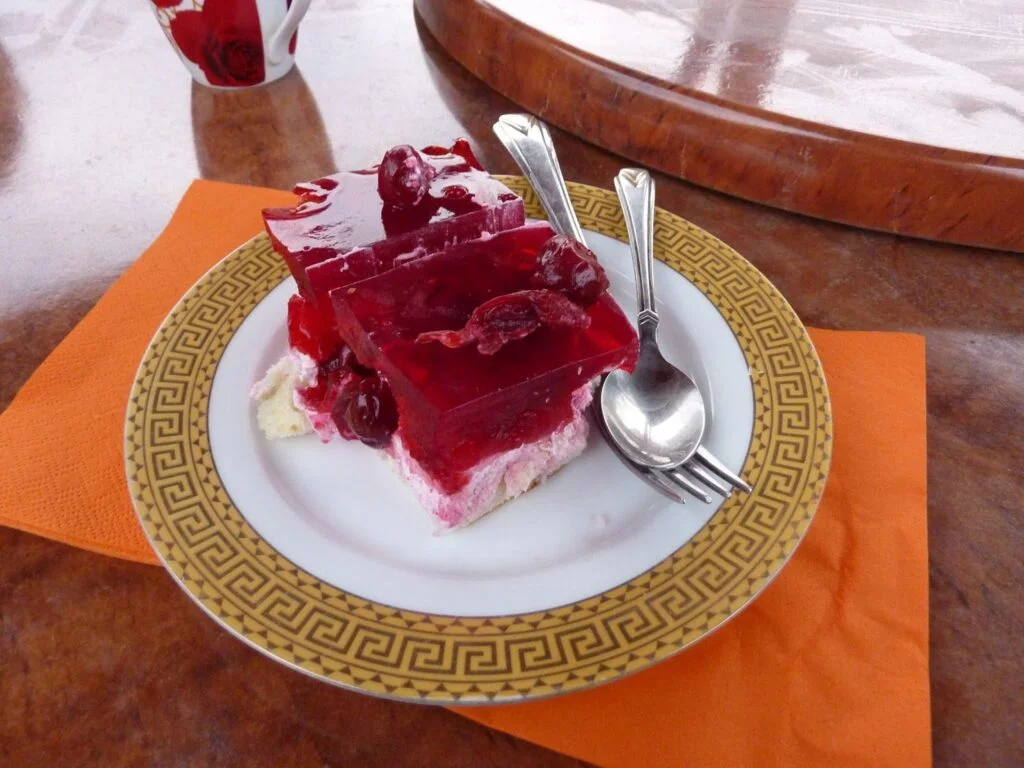

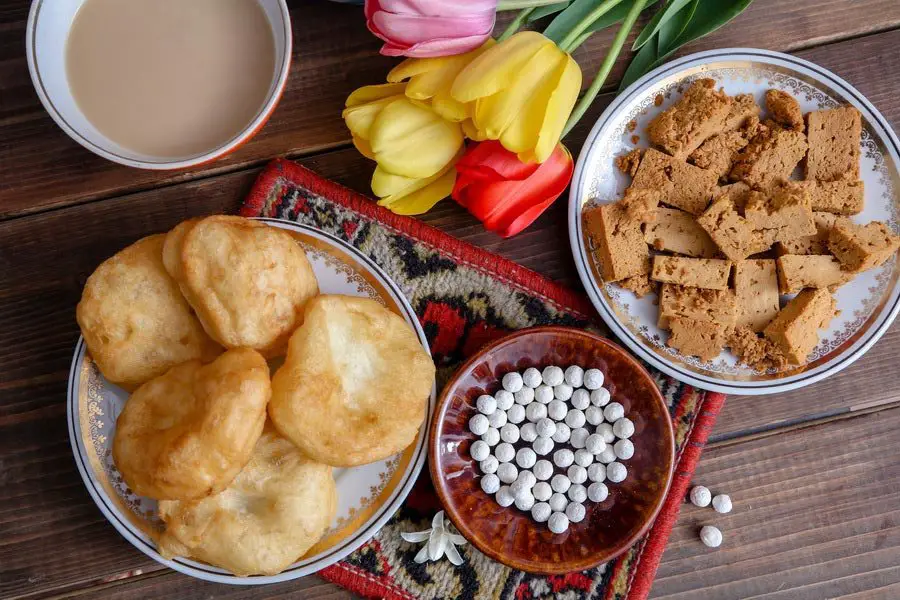

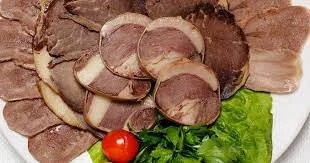
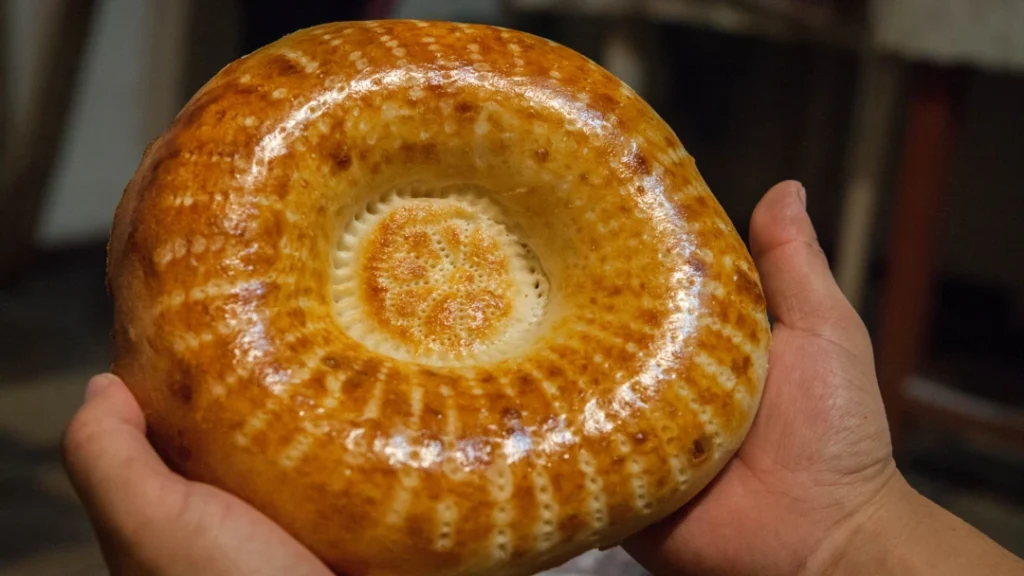
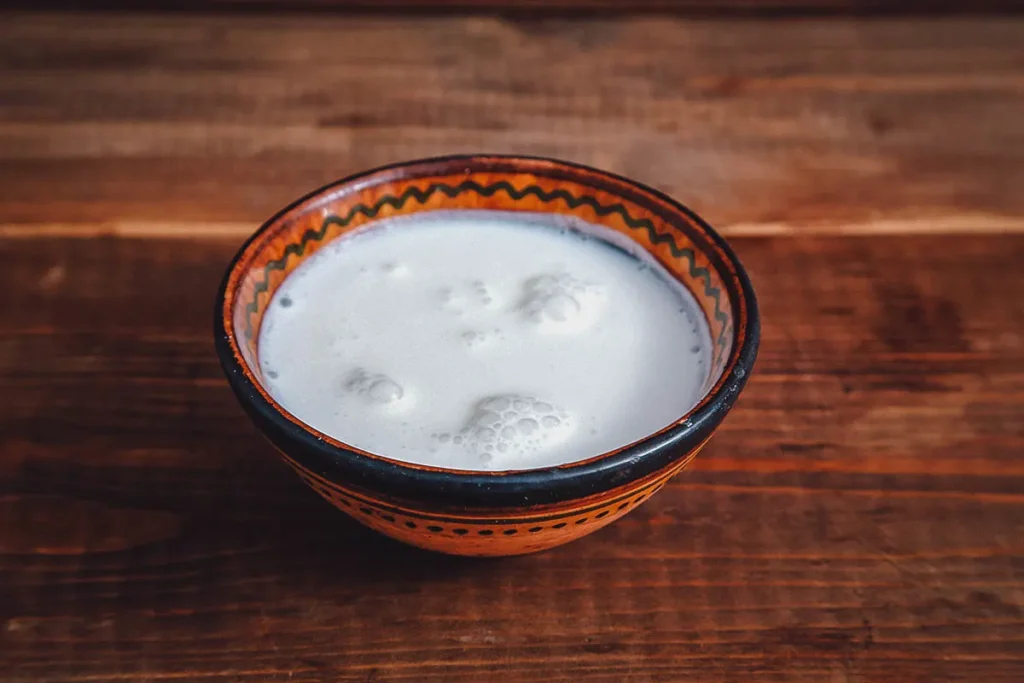
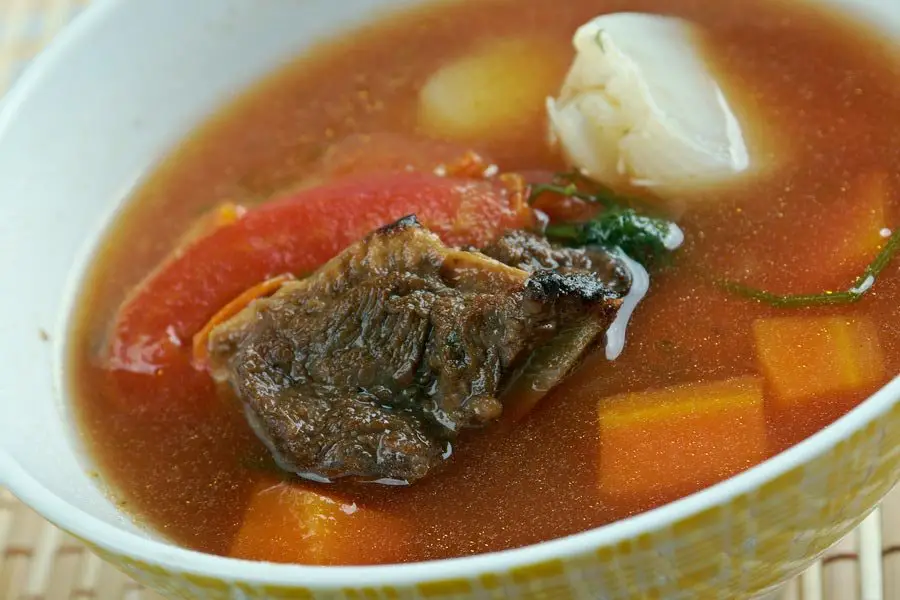
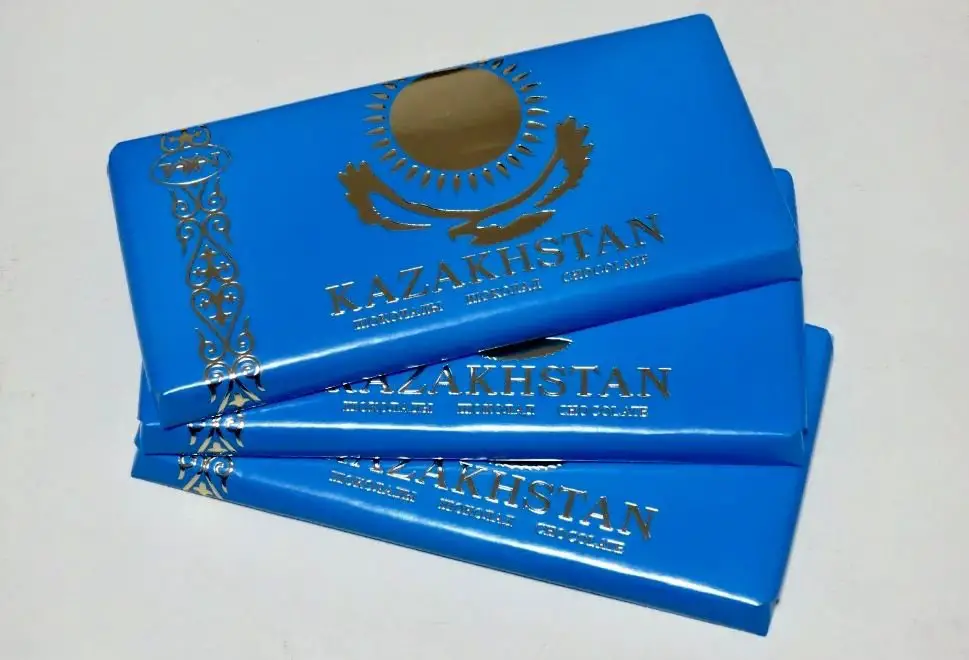
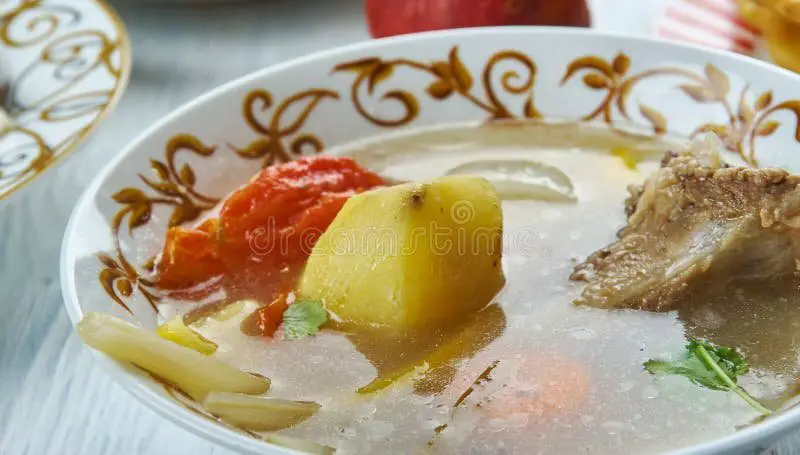
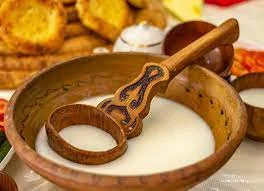

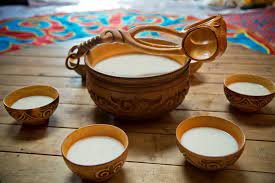

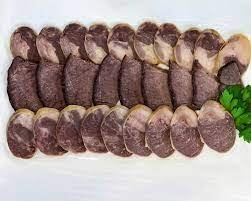
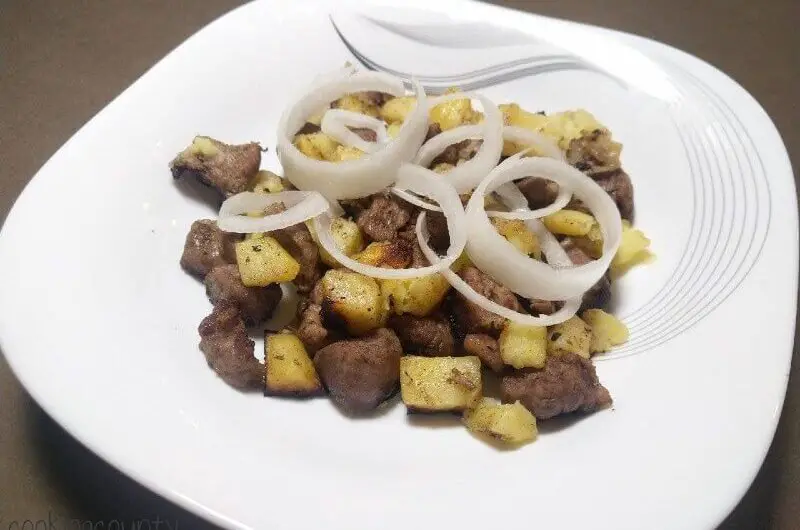
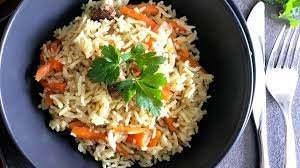

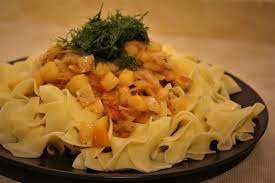
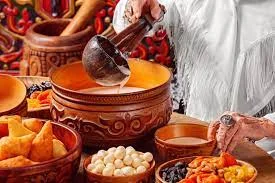
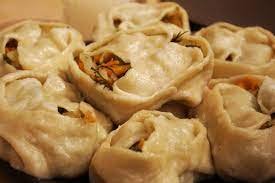
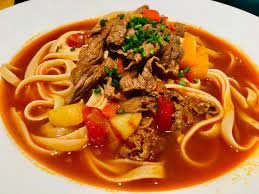
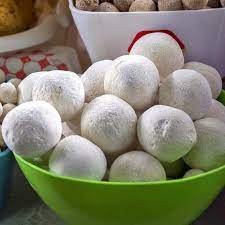

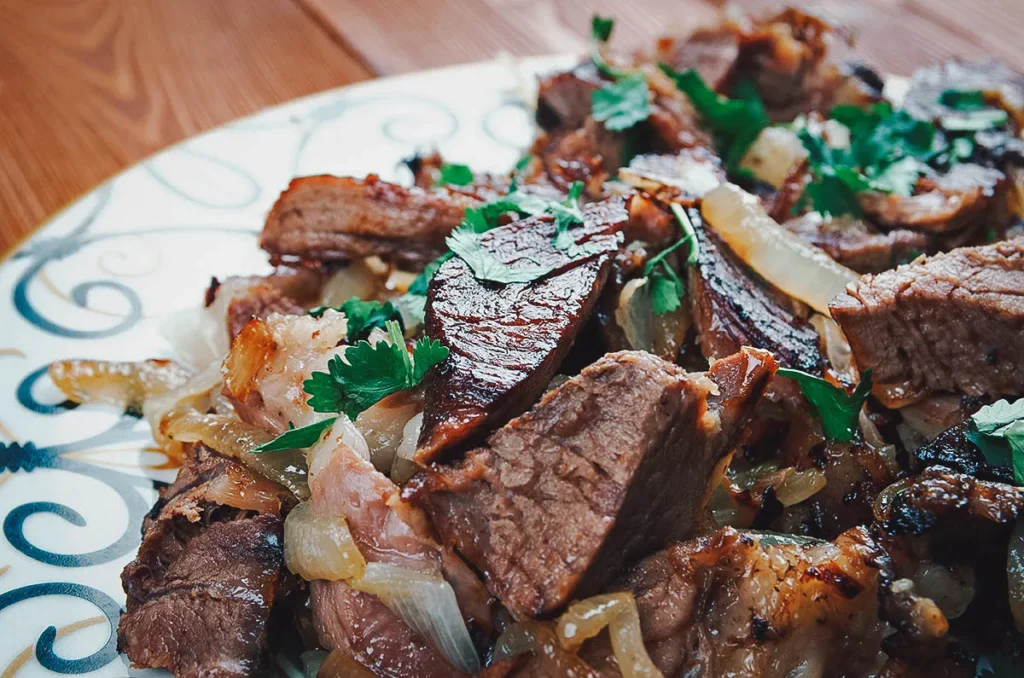
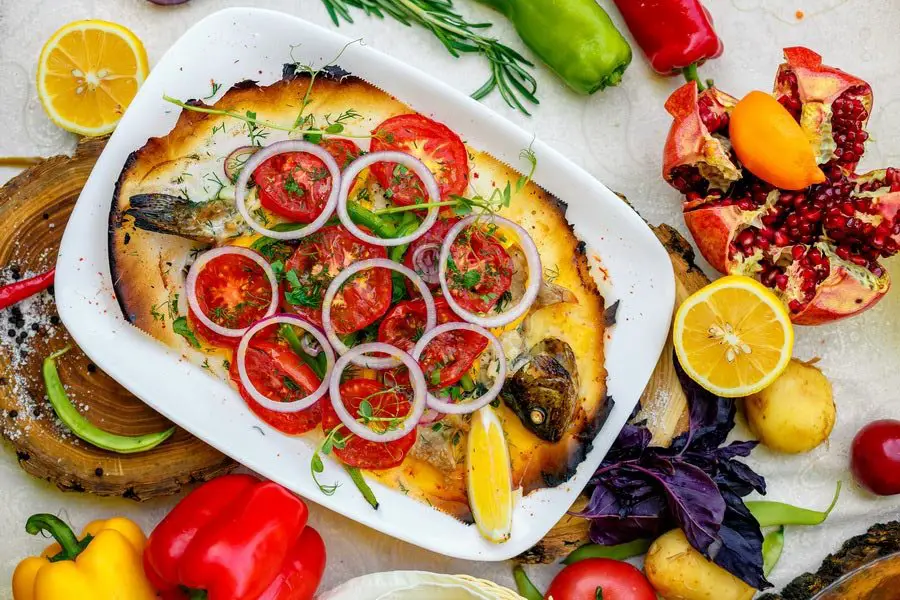
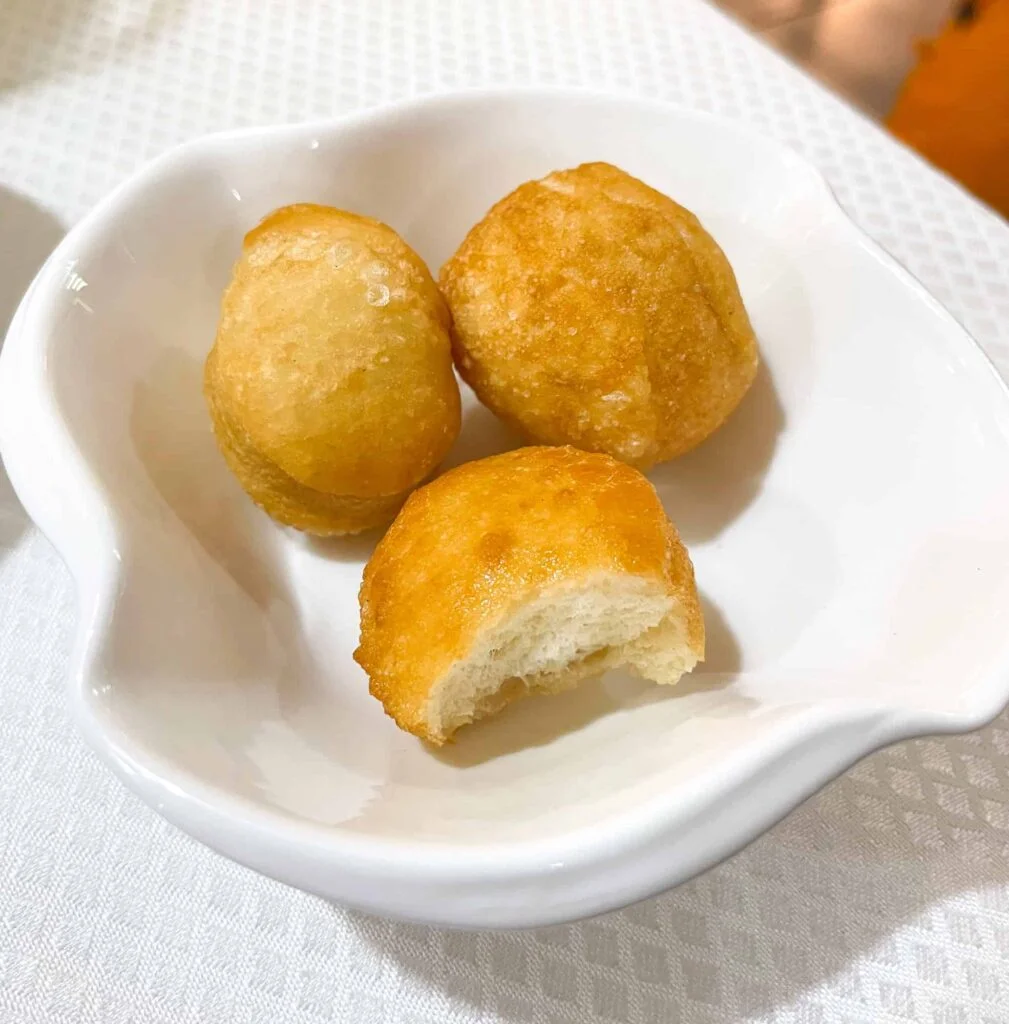


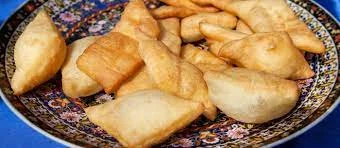
More Articles for Your Pleasure
- North and South American Cuisine – A Culinary Expedition
- European Cuisine: Savor the Continent’s Best Culinary Secrets!
- African Cuisine: Discover the Bold Flavors & Global Charm!
- Asian Cuisine Unlock its Secrets – Taste, Health & Global Influence!
- Oceania Cooking: A Culinary Journey Through the Pacific
Kazakhstan: Exploring the Rich Tapestry of Kazakh Cuisine
Kazakhstan, a vast and diverse nation nestled in the heart of Central Asia, boasts a culinary heritage as varied as its landscapes. From the soaring peaks of the Tian Shan mountains to the vast steppes stretching as far as the eye can see, Kazakhstan is a land of contrasts, reflecting in its cuisine. In this culinary journey through Kazakhstan, we’ll delve into the nation’s history, climate, and cultural influences that shape its unique dishes.
Kazakh food, with its robust flavors and diverse ingredients, offers a delightful tapestry of tastes that mirrors the nation’s rich history and cultural tapestry. Join us as we explore the highlights of Kazakhstan’s national dishes and uncover the recipes that define this remarkable cuisine.
Read on to discover the hidden gems of Kazakh cuisine, from traditional recipes to modern culinary twists
Kazakhstan’s History and Its Effect on Cuisine
Kazakhstan’s history has affected its cuisine in many ways, as the country has a diverse and eclectic past that can be seen in the local food, culture, and religion. Here are some of the main influences:
Nomadic lifestyle
This left a mark on the national cuisine, which is centered heavily on meat, especially lamb and horse meat, as well as various dairy products. Most cooking techniques were aimed at long-term preservation of food, such as salting, drying, smoking, and fermenting meat and milk.
Some of the traditional dishes that reflect this nomadic heritage are beshbarmak, quyrdak, kazy, shuzhyk, and qurt.
Turkic culture
Kazakhstan is part of the Turkic world, which includes countries such as Turkey, Azerbaijan, Uzbekistan, Kyrgyzstan, and others. The Turkic culture has influenced the language, religion, and cuisine of Kazakhstan.
For example, many Kazakh dishes have Turkic names, such as beshbarmak (meaning “five fingers”), quyrdak (meaning “frying”), and manti (meaning “dumpling”).
The Turkic culture also introduced Islam to Kazakhstan in the 7th century, which influenced the dietary habits and rituals of the people, such as avoiding pork, alcohol, and blood, and celebrating religious festivals with special foods.
Russian and Soviet influence
Kazakhstan was part of the Russian Empire and later the Soviet Union for more than two centuries, which had a significant impact on the political, economic, and social aspects of the country.
The Russian and Soviet influence also affected the cuisine of Kazakhstan, as new ingredients, dishes, and cooking methods were introduced. For example, bread, potatoes, cabbage, carrots, beets, and other vegetables became more common in the Kazakh diet, as well as dishes such as borscht, pelmeni, plov, and blini.
The Soviet period also brought more diversity and fusion to the Kazakh cuisine, as people from different ethnic groups and regions migrated to and from Kazakhstan, bringing their own culinary traditions and preferences.
Kazakhstan’s history has shaped its cuisine into a unique and varied one, that reflects the rich and diverse history, culture, and geography of the country.
How Kazakhstan’s Climate and Geography has Influenced Kazakhstan Food
Kazakhstan’s climate and geography have influenced its food in various ways, as the country has a diverse and eclectic past that can be seen in the local food, culture, and religion. Here are some of the main influences:
Nomadic lifestyle
For hundreds of years, Kazakhs were nomads and shepherds who raised cattle, sheep, camels, and horses, relying on these animals for transportation, clothing, and food. This left a mark on the national cuisine, which is centered heavily on meat, especially lamb and horse meat, as well as various milk products.
Most cooking techniques were aimed at long-term preservation of food, such as salting, drying, smoking, and fermenting meat and milk. Some of the traditional dishes that reflect this nomadic heritage are beshbarmak, quyrdak, kazy, shuzhyk, and qurt.
Continental and dry climate
The climate throughout Kazakhstan is continental and dry, and there are four distinct seasons. The weather in different regions can vary greatly, from cold winters and hot summers in the north and east, to mild winters and hot summers in the south and west.
The climate affects the availability and quality of food, as well as the preferences and habits of the people. For example, in the cold regions, people tend to eat more fatty and hearty foods, such as meat, butter, and cheese, to keep warm and energetic.
In the hot regions, people tend to eat lighter and refreshing foods, such as fruits, vegetables, and salads, to cool down and hydrate. The climate also influences the spices and herbs used in cooking, as some are more suitable for certain weather conditions than others.
Diverse geography
Kazakhstan is the ninth largest country in the world, covering three time zones, and has a varied geography, from mountains and forests, to steppes and deserts, to lakes and rivers. The geography determines the natural resources and the agricultural products of each region, as well as the cultural and ethnic diversity of the people.
- In the mountainous regions, such as Almaty and Shymkent, people grow and consume more fruits, nuts, and grains, such as apples, apricots, walnuts, and wheat.
- In the steppe regions, such as Astana and Karaganda, people raise and consume more livestock, such as horses, sheep, and cows.
- In the desert regions, such as Aktobe and Atyrau, people rely on and consume more fish and seafood, such as sturgeon, carp, and caviar.
The geography also influences the culinary traditions and influences of the neighboring countries, such as Russia, China, Uzbekistan, Kyrgyzstan, and others.
Understanding the Essence of Kazakhstan Food
Kazakh food is not just about sustenance; it’s a cultural expression that tells the story of the nation. The essence lies in the connection to nature, the nomadic heritage, and the celebration of communal life.
Each dish reflects the unique way of life in Kazakhstan, embodying the values of hospitality, community, and resourcefulness that have sustained the people through centuries.
Kazakhstan Culinary Traditions
Culinary traditions in Kazakhstan are deeply intertwined with the country’s nomadic past and cultural diversity. Special occasions, festivals, and family gatherings are marked by the preparation and sharing of traditional dishes.
Beshbarmak, the iconic national dish, often takes center stage during celebrations, symbolizing unity and togetherness. The act of cooking and sharing meals is a cherished tradition that reinforces social bonds.
What are the Health Implications of Kazakhstan Cuisine?
Kazakhstan cuisine has both positive and negative health implications, depending on the type, quantity, and frequency of consumption of different dishes. Here are some of the main points to consider:
Kazakhstan cuisine is rich in protein
Kazakhstan cuisine is rich in protein, which is essential for muscle growth, repair, and maintenance. Protein also helps to regulate appetite, blood sugar, and metabolism. The main sources of protein in Kazakhstan cuisine are meat, dairy, beans, and lentils.
Kazakhstan cuisine is Rich in Fiber
Kazakhstan cuisine is also rich in fiber, which is beneficial for digestion, bowel health, and cholesterol levels. Fiber also helps to prevent constipation, diverticulitis, and colon cancer. The main sources of fiber in Kazakhstan cuisine are cereals, vegetables, and fruits.
Kazakhstan cuisine is rich in Antioxidants
Kazakhstan cuisine is rich in antioxidants, which are helpful for preventing oxidative stress, inflammation, and chronic diseases. Antioxidants also help to protect the cells, tissues, and organs from damage and aging. The main sources of antioxidants in Kazakhstan cuisine are spices, herbs, and fruits.
Kazakhstan cuisine high in saturated fats, salt, and cholesterol
However, Kazakhstan cuisine also has some drawbacks, such as the high intake of saturated fats, salt, and cholesterol, which can increase the risk of cardiovascular diseases, such as hypertension, atherosclerosis, and stroke. The main sources of saturated fats, salt, and cholesterol in Kazakhstan cuisine are meat, dairy, and fried foods.
Kazakhstan cuisine has high levels of refined carbohydrates, sugar, and oil,
Kazakhstan cuisine is the high intake of refined carbohydrates, sugar, and oil, which can increase the risk of diabetes and obesity. Refined carbohydrates, sugar, and oil can cause spikes and drops in blood sugar, insulin resistance, and fat accumulation. The main sources of refined carbohydrates, sugar, and oil in Kazakhstan cuisine are bread, pastries, and sweets.
Kazakhstan cuisine has low levels of some essential nutrients
Kazakhstan cuisine is the low intake of some essential nutrients, such as calcium, iron, and folate, which can cause deficiencies and health problems. Calcium is important for bone health, iron is important for blood health, and folate is important for cell health. The main sources of calcium, iron, and folate in Kazakhstan cuisine are dairy, eggs, and leafy greens, which are not consumed enough.
Kazakhstan’s National Dish
Beshbarmak, meaning “five fingers” in Kazakh, is the national dish of Kazakhstan and a symbol of Kazakh hospitality. Traditionally made with boiled meat (often lamb or beef), served on a bed of pasta, and accompanied by onions and broth, Beshbarmak embodies the spirit of communal dining.
This dish is a testament to the nomadic heritage, where sharing a meal symbolizes unity and camaraderie.
Exploring Kazakhstan Ingredients: The Flavors of Kazakh Cuisine
Kazakh cuisine is a celebration of locally sourced ingredients that thrive in the diverse landscapes of the country. From the hearty meats of nomadic herding to the abundance of dairy products, Kazakh dishes showcase the flavors of the steppes and mountains.
Staple ingredients like wheat, barley, and millet are transformed into traditional bread and porridge, while the use of aromatic spices adds depth to the culinary experience.
The nation’s cuisine is not just a collection of recipes; it’s a cultural expression that speaks to the values and traditions of the people.
From the iconic Beshbarmak to the vibrant celebration of communal meals, Kazakh food is a journey through the heart and soul of a nation. So, join us as we explore the delightful flavors and stories that make Kazakh cuisine a truly unique and enriching experience.
Traditional Kazakhstan Food: A Culinary Tapestry
Kazakhstan, nestled in the heart of Central Asia, boasts a rich tapestry of traditional foods that reflect the country’s nomadic heritage and diverse cultural influences. The culinary landscape is a mosaic of flavors, blending the bounty of the steppes with the artistry of nomadic cooking techniques passed down through generations.
At the core of traditional Kazakh cuisine is a reverence for meat, particularly lamb, beef, and horse meat. Beshbarmak, a national dish, epitomizes this love for meat, featuring boiled meat served atop a bed of pasta and accompanied by broth. Lagman, a noodle dish with savory broth, and Kuurdak, a hearty mix of meat and potatoes, showcase the diversity in preparation methods.
Dairy also plays a pivotal role, with products like kumis (fermented mare’s milk) and Shubat (camel’s milk) offering a unique taste of the nomadic lifestyle. Baursak, fried dough delights, and Manti, steamed dumplings, add a touch of sweetness and variety to Kazakh feasts.
As Kazakhstan strides forward into the modern era, traditional foods continue to be an integral part of celebrations, embodying the spirit of community and the resilience of a nation deeply connected to its roots. Explore the culinary heritage of Kazakhstan through its traditional dishes, where each bite tells a story of nomadic traditions and cultural diversity.
Kazakhstan Food Dishes to Try at Home
Convinced? Try some of the tasty Kazakh treats shown below in the comfort of your own kitchen.
Kazakhstan Food – Baursak

History and Background
Baursak, a beloved traditional Kazakh pastry, has deep roots in the cultural and nomadic history of Kazakhstan. This fried dough delight has been a symbol of celebration and hospitality for centuries. Baursak’s origins can be traced to the nomadic lifestyle, where it served as a portable and energy-rich food source for the Kazakh people during their extensive travels across the vast steppes.
Region of Origin
Baursak is an integral part of Kazakh culinary heritage and is commonly prepared during special occasions, festivals, and family gatherings. The recipe has been passed down through generations, reflecting the resilience and resourcefulness of the Kazakh people in utilizing simple ingredients to create a delicious and culturally significant dish.
Kazakhstan Food – Baursak Ingredients
- 3 cups all-purpose flour
- 1 cup warm milk
- 1 tablespoon sugar
- 1 teaspoon salt
- 1 teaspoon baking powder
- Vegetable oil for frying
- Sesame seeds for garnish (optional)
Kazakhstan Food – Baursak Recipe
Preparing the Dough
- In a large mixing bowl, combine flour, sugar, salt, and baking powder.
- Gradually add warm milk, kneading the mixture until a smooth dough forms.
- Cover the dough with a damp cloth and let it rest for at least 30 minutes.
Shaping Baursak
- Divide the dough into equal portions and roll each portion into a ball.
- Flatten each ball slightly and make a small indentation in the center using your thumb.
Frying Baursak
- Heat vegetable oil in a deep pan over medium heat.
- Fry the shaped Baursak until golden brown on both sides, ensuring even cooking.
Serving
- Remove Baursak from the oil and place them on a paper towel to absorb excess oil.
- Optionally, sprinkle sesame seeds over the Baursak for added flavor and presentation.
- Serve Baursak warm, and enjoy this delightful Kazakh pastry with tea or as a sweet treat.
Baursak’s significance goes beyond its delicious taste; it encapsulates the warmth of Kazakh hospitality and the enduring spirit of a people connected to their nomadic past.
Kazakhstan Food – Beshbarmak

History and Background
Beshbarmak, meaning “five fingers” in Kazakh, is a quintessential dish that holds a special place in Kazakhstan’s culinary heritage. Originating from the nomadic traditions of the region, Beshbarmak reflects the practicality and resourcefulness of the Kazakh people.
Traditionally made with boiled meat (often lamb or beef), served on a bed of pasta, and accompanied by onions and broth, Beshbarmak is more than a meal—it is a symbol of communal unity and hospitality.
Region of Origin
Beshbarmak is deeply rooted in the nomadic culture of Kazakhstan, where the dish served as a communal meal during celebrations, gatherings, and special occasions.
The preparation and sharing of Beshbarmak symbolize unity and togetherness, reflecting the close-knit nature of Kazakh communities.
Kazakhstan Food – Beshbarmak Ingredients
- 1 lb lamb or beef, cut into chunks
- 1 onion, finely chopped
- 4 cups all-purpose flour
- 1 cup warm water
- Salt to taste
- Black pepper to taste
- Fresh parsley for garnish
Beshbarmak Recipe
Preparing the Meat
- In a large pot, bring water to boil and add chunks of lamb or beef.
- Season with salt and black pepper to taste.
- Cook the meat until tender, skimming off any impurities that rise to the surface.
Making the Dough
- In a large bowl, combine flour and a pinch of salt.
- Gradually add warm water, kneading the mixture until it forms a smooth dough.
- Roll out the dough and cut it into small squares.
Assembling Beshbarmak
- Once the meat is cooked, remove it from the broth and set aside.
- Boil the pasta squares in the meat broth until cooked.
- On a serving platter, arrange the boiled pasta, and place the cooked meat on top.
Serving
- Garnish with finely chopped onions and fresh parsley.
- Serve Beshbarmak hot, with additional broth on the side.
- Traditionally, Beshbarmak is eaten with the hands, symbolizing a communal bond.
Beshbarmak stands as a cultural emblem of Kazakhstan, embodying the essence of togetherness and the rich traditions of the Kazakh people.
Kazakhstan Food – Chak-chak pie

History and Background
Chak-chak pie is a sweet delicacy with roots in the diverse culinary landscape of Kazakhstan. Originating from the Tatar and Bashkir ethnic groups, Chak-chak has found its way into Kazakh cuisine, becoming a popular treat during celebrations and festive occasions.
This dessert, characterized by its fried dough soaked in honey syrup, reflects the cultural intermingling and shared culinary traditions in the region.
Region of Origin
Chak-chak is associated with the Central Asian and Turkic cuisines, transcending borders and becoming a beloved treat in Kazakhstan. The dish’s popularity during weddings, holidays, and family gatherings underscores its significance in Kazakh culinary culture.
The unique preparation method and the use of honey contribute to the dessert’s symbolic importance in celebrations.
Kazakhstan Food – Chak-chak pie Ingredients
- 3 cups all-purpose flour
- 3 large eggs
- 1/2 cup sour cream
- 1/4 cup butter, melted
- 1/2 teaspoon baking soda
- 1/4 teaspoon salt
- Vegetable oil for frying
- 1 cup honey
- 1/2 cup water
- Optional: chopped nuts or sesame seeds for garnish
Kazakhstan Food – Chak-chak pie Recipe
Preparing the Dough
- In a large bowl, whisk together eggs, sour cream, melted butter, baking soda, and salt.
- Gradually add flour, mixing until a smooth dough forms.
- Cover the dough and let it rest for at least 30 minutes.
Frying the Dough
- Heat vegetable oil in a deep pan over medium heat.
- Divide the dough into small portions and roll each into a thin log shape.
- Fry the dough logs until golden brown, ensuring even cooking.
Making the Honey Syrup
- In a separate saucepan, combine honey and water.
- Bring the mixture to a gentle boil, stirring to form a syrup.
Assembling Chak-chak Pie
- Dip the fried dough logs into the honey syrup, ensuring they are well coated.
- Arrange the coated logs into a pie-like shape on a serving platter.
Serving
- Optionally, sprinkle chopped nuts or sesame seeds over the Chak-chak pie for added texture.
- Allow the dessert to cool and the syrup to set before serving.
Chak-chak pie, with its delightful combination of crispy fried dough and sweet honey syrup, stands as a testament to the cultural exchange and culinary diversity found in Kazakhstan. Enjoy this dessert as a symbol of celebration and shared moments with loved ones.
Kazakhstan Food – Irimshik

History and Background
Irimshik, a traditional sweet treat in Kazakhstan, has a history deeply rooted in the country’s nomadic lifestyle. This dish, often enjoyed during festive occasions and celebrations, showcases the creativity and resourcefulness of the Kazakh people in utilizing simple ingredients to create delightful desserts. Irimshik’s origins can be traced to the rich cultural tapestry of Kazakhstan, reflecting the influence of both Turkic and Mongolian culinary traditions.
Region of Origin
Irimshik is a culinary gem that has traversed generations in Kazakhstan, serving as a testament to the enduring traditions of the nomadic culture. The dish is particularly cherished during events like weddings, where it symbolizes joy, abundance, and the sweetness of life. Irimshik has become an integral part of Kazakh culinary heritage, transcending regional boundaries and maintaining its popularity across the country.
Kazakhstan Food – Irimshik Ingredients
- 2 cups wheat flour
- 1 cup milk
- 1/2 cup sugar
- 1/4 cup melted butter
- 1 teaspoon baking soda
- A pinch of salt
- Vegetable oil for frying
- Powdered sugar for dusting
Kazakhstan Food – Irimshik Recipe
Preparing the Dough
- In a mixing bowl, combine wheat flour, sugar, baking soda, and a pinch of salt.
- Gradually add milk and melted butter, kneading the mixture until a soft dough forms.
- Cover the dough and let it rest for about 30 minutes.
Shaping Irimshik
- Divide the dough into small portions and roll each portion into a thin strip.
- Twist and shape the strips into intricate patterns, creating the characteristic design of Irimshik.
Frying Irimshik
- Heat vegetable oil in a pan over medium heat.
- Fry the shaped dough strips until they turn golden brown, ensuring even cooking.
Dusting with Powdered Sugar
- Once fried, transfer the Irimshik to a paper towel to absorb excess oil.
- Allow the Irimshik to cool slightly before dusting with powdered sugar.
Serving
- Serve Irimshik as a delightful sweet snack or dessert, celebrating the rich culinary heritage of Kazakhstan.
Irimshik stands as a testament to the artistry and culinary ingenuity of the Kazakh people, offering a sweet glimpse into the vibrant traditions that define Kazakhstan’s cultural identity.
Kazakhstan Food – Koktal

History and Background
Koktal, a traditional dish hailing from Kazakhstan, is deeply rooted in the nomadic history and cultural heritage of the region. Historically, Koktal was a staple among the nomadic Kazakh people, offering a source of sustenance during their journeys across the vast steppes. Today, it has evolved into a beloved dish, reflecting the enduring spirit and culinary traditions of Kazakhstan.
Region of Origin
Koktal is closely associated with Kazakh culture and is prepared and enjoyed across the country. Its origins lie in the nomadic lifestyle, where simplicity and practicality in cooking were essential. The dish has become a symbol of celebration, often gracing festive tables during special occasions, weddings, and family gatherings.
Kazakhstan Food – Koktal Ingredients
- 2 cups wheat flour
- 1 cup water
- 1/2 cup milk
- 2 eggs
- 1 tablespoon vegetable oil
- 1/2 teaspoon salt
- Vegetable oil for frying
- Powdered sugar for dusting
Kazakhstan Food – Koktal Recipe
Making the Dough
- In a mixing bowl, combine wheat flour, water, milk, eggs, vegetable oil, and salt.
- Knead the mixture until it forms a smooth and elastic dough.
- Cover the dough and let it rest for about 30 minutes.
Shaping Koktal
- Divide the dough into small portions and roll each portion into a ball.
- Roll out each ball into a thin, flat circle.
Frying Koktal
- Heat vegetable oil in a deep pan over medium heat.
- Fry the rolled-out dough until it puffs up and turns golden brown on both sides.
Dusting with Powdered Sugar
- Remove Koktal from the oil and place them on a paper towel to absorb excess oil.
- Dust the fried Koktal with powdered sugar while they are still warm.
Serving
- Serve Koktal as a delightful fried dough treat, enjoyed during festive occasions and celebrations.
Koktal, with its humble yet flavorful composition, serves as a link between Kazakhstan’s nomadic past and its vibrant present, embodying the essence of Kazakh culinary traditions.
Kazakhstan Food – Kuyrdak

History and Background
Kuyrdak, a hearty dish from Kazakhstan, has deep ties to the nomadic heritage of the region. Originating in the nomadic lifestyle of the Kazakh people, Kuyrdak was a practical way to utilize various cuts of meat and offal. This dish reflects the resourcefulness and resilience of the Kazakh nomads, showcasing their ability to create flavorful meals with limited ingredients.
Region of Origin
Kuyrdak has its roots in the vast steppes of Kazakhstan, where the nomadic Kazakh communities roamed with their herds. The dish was traditionally prepared using the meat and organs of livestock, emphasizing a sustainable and nose-to-tail approach to cooking. Today, Kuyrdak remains a symbol of Kazakh culinary heritage, enjoyed during gatherings and celebrations.
Kazakhstan Food – Kuyrdak Ingredients
- 1 lb lamb or beef, mixed cuts (including liver and kidneys)
- 2 onions, finely chopped
- 3 tablespoons vegetable oil
- Salt and black pepper to taste
- 1 teaspoon cumin (optional)
- 3-4 potatoes, peeled and diced
- Fresh parsley for garnish
Kazakhstan Food – Kuyrdak Recipe
Preparing the Meat
- Cut the meat into bite-sized pieces, including liver and kidneys if available.
- In a large pan, heat vegetable oil over medium heat and sauté chopped onions until golden.
Cooking the Meat
- Add the meat to the pan and cook until browned on all sides.
- Season with salt, black pepper, and cumin for added flavor (if using).
- If using liver and kidneys, add them to the pan and cook until they are no longer pink inside.
Adding Potatoes
- Incorporate diced potatoes into the pan and mix well with the meat.
- Cover the pan and let the ingredients simmer until the potatoes are tender.
Garnishing and Serving
- Garnish Kuyrdak with fresh parsley before serving.
- Serve Kuyrdak hot, either as a main dish or accompanied by flatbread.
Kuyrdak encapsulates the essence of Kazakh nomadic cooking, providing a savory experience that connects the present with the rich history of the steppes. Enjoy this flavorful dish as a testament to the resourceful culinary traditions of Kazakhstan.
Kazakhstan Food – Kazy

History and Background
Kazy, a traditional sausage from Kazakhstan, holds a significant place in the culinary traditions of the country. Originating from the nomadic lifestyle of the Kazakh people, Kazy was developed as a practical means of preserving meat in the harsh conditions of the Central Asian steppes.
Today, it stands as a symbol of cultural heritage and is often enjoyed during special occasions and celebrations.
Region of Origin
Kazy is deeply rooted in the nomadic history of Kazakhstan, where the necessity for long-lasting and portable food led to the development of various preservation techniques. The dish is a reflection of the resourcefulness of the Kazakh people in utilizing available ingredients, particularly meat from their herds.
Kazy is a beloved part of Kazakh cuisine, transcending regional boundaries and maintaining its significance in modern times.
Kazakhstan Food – Kazy Ingredients
- 2 lbs horse meat (or a mix of horse and beef)
- 1/2 lb lamb fat
- 1 tablespoon salt
- 1 tablespoon black pepper
- 1 tablespoon red pepper flakes
- 1 teaspoon cumin
- 2 tablespoons crushed garlic
- 2-3 feet of horse intestines (cleaned thoroughly)
Kazakhstan Food – Kazy Recipe
Preparing the Meat Mixture
- Grind horse meat and lamb fat together to form a coarse mixture.
- Add salt, black pepper, red pepper flakes, cumin, and crushed garlic to the meat mixture.
- Mix the ingredients thoroughly to ensure even seasoning.
Stuffing the Intestines
- Clean the horse intestines thoroughly, rinsing them multiple times.
- Soak the intestines in cold water with a pinch of salt for at least an hour.
- Rinse the intestines again and stuff them with the seasoned meat mixture.
Cooking Kazy
- Tie the stuffed intestines at regular intervals to form sausages.
- Hang the sausages in a cool, well-ventilated place for several weeks to air-dry and ferment.
Serving
- Once dried, Kazy can be stored for an extended period.
- To serve, boil Kazy until fully cooked or grill for added flavor.
- Slice Kazy and serve it as a delicacy during festive occasions.
Kazy stands as a testament to the ingenuity of Kazakh nomads, offering a taste of history and tradition that has withstood the test of time. Enjoy this unique sausage as a cultural experience from the heart of Kazakhstan.
Kazakhstan Food – Kurt

History and Background
Kurt, a traditional dried dairy product from Kazakhstan, has a history deeply intertwined with the nomadic lifestyle of the Kazakh people. Originating as a method of preserving dairy during the extensive journeys across the steppes, Kurt has evolved into a beloved snack that reflects the resourcefulness and culinary traditions of the Kazakh nomads. Today, Kurt remains a symbol of the enduring connection between the people of Kazakhstan and their nomadic past.
Region of Origin
Kurt’s roots can be traced to the expansive steppes of Kazakhstan, where dairy products played a vital role in the nomadic diet. The need for portable and long-lasting food sources led to the creation of Kurt, which has become a staple in Kazakh cuisine. The dish transcends regional boundaries, representing a shared cultural heritage across the vast landscapes of Kazakhstan.
Kazakhstan Food – Kurt Ingredients
- 1 quart plain yogurt (preferably from sheep or cow’s milk)
- Salt to taste
Kazakhstan Food – Kurt Recipe
Draining the Yogurt
- Place a clean cheesecloth or muslin cloth over a large bowl.
- Pour the plain yogurt onto the cloth, allowing the whey to drain into the bowl.
- Tie the corners of the cloth together to form a pouch and hang it to drain for 24-48 hours.
Shaping Kurt
- Once the yogurt has thickened, transfer it to a clean surface.
- Add salt to taste and knead the yogurt until it forms a smooth, pliable mass.
Drying Kurt
- Pinch off small portions of the yogurt mass and shape them into small balls or cylinders.
- Place the shaped Kurt on a tray or rack to air-dry for several days.
Curing Kurt
- After the initial drying, store Kurt in a cool, dry place for an additional period to cure.
- The longer Kurt cures, the firmer and drier it becomes.
Serving
- Once dried and cured, Kurt is ready to be enjoyed as a nutritious and flavorful snack.
Kurt’s journey from a practical dairy preservation method to a revered snack mirrors the resilience and adaptability of the Kazakh people. Savor the taste of history with this iconic Kazakh dairy delight.
Kazakhstan Food – Laghman

History and Background
Laghman, a flavorful noodle dish from Kazakhstan, reflects the country’s rich history and cultural diversity. Originating along the Silk Road, Lagman has been influenced by various culinary traditions, making it a symbol of Kazakhstan’s historical crossroads.
The dish’s intricate blend of flavors and textures showcases the diverse ingredients available along the trade routes, creating a culinary masterpiece that has stood the test of time.
Region of Origin
Laghman’s roots can be traced to Central Asia, with variations of the dish found in Kazakhstan, absorbed culinary influences from different regions, contributing to the unique character of Lagman.
This noodle dish has become an integral part of Kazakh cuisine, enjoyed in various households and eateries across the country.
Kazakhstan Food – Laghman Ingredients
For the Noodles:
- 2 cups all-purpose flour
- 1/2 teaspoon salt
- Water as needed
For the Lagman Broth:
- 1 lb lamb or beef, thinly sliced
- 2 tablespoons vegetable oil
- 1 large onion, thinly sliced
- 2 carrots, julienned
- 1 bell pepper, thinly sliced
- 3 tomatoes, diced
- 3 cloves garlic, minced
- 1 tablespoon tomato paste
- 1 teaspoon ground cumin
- 1 teaspoon ground coriander
- 1 teaspoon paprika
- Salt and black pepper to taste
- 6 cups beef or vegetable broth
- Fresh herbs for garnish (parsley or cilantro)
Kazakhstan Food – Laghman Recipe
Making the Noodles
Mixing the Dough
- In a bowl, combine flour and salt.
- Gradually add water and knead until a smooth dough forms.
- Cover the dough and let it rest for at least 30 minutes.
Rolling and Cutting
- Roll out the dough into a thin sheet.
- Cut the sheet into thin strips to form the Lagman noodles.
Preparing Lagman
Sautéing Meat and Vegetables
- In a large pot, heat vegetable oil and sauté thinly sliced meat until browned.
- Add sliced onions, julienned carrots, and bell peppers to the pot. Sauté until vegetables are tender.
- Stir in diced tomatoes, minced garlic, and tomato paste. Cook until tomatoes break down.
Seasoning and Simmering
- Add ground cumin, ground coriander, paprika, salt, and black pepper. Mix well.
- Pour in beef or vegetable broth and bring the mixture to a simmer. Allow flavors to meld.
Boiling the Noodles
- In a separate pot, boil the Lagman noodles until al dente.
- Drain the noodles and toss them with a bit of oil to prevent sticking.
Serving
- Serve the Laghman by placing a portion of boiled noodles in a bowl and ladling the flavorful broth with meat and vegetables on top.
- Garnish with fresh herbs like parsley or cilantro.
Laghman, with its intricate blend of flavors, serves as a culinary testament to Kazakhstan’s historical and cultural intersections.
Savor the richness of this Silk Road-inspired dish that has become a beloved part of Kazakh gastronomy.
Kazakhstan Food – Manti

History and Background
Manti, a beloved dumpling dish from Kazakhstan, has deep roots in Central Asian culinary traditions. Originating in the nomadic culture of the region, Manti represents a practical and delicious way to enjoy meat-filled dumplings. As a dish that transcends national borders, Manti has variations in many Central Asian countries, including Kazakhstan, where it has become a staple on festive tables and in everyday meals.
Region of Origin
Manti’s origins can be traced to the nomadic communities of Central Asia, including Kazakhstan. The dish gained popularity along trade routes and became a culinary tradition passed down through generations. Today, Manti remains a symbol of communal gatherings, with families coming together to prepare and enjoy these delightful dumplings, each bite echoing centuries of culinary history.
Kazakhstan Food – Manti Ingredients
Dough:
- 3 cups all-purpose flour
- 1 cup water
- 1 teaspoon salt
Filling:
- 1 lb ground lamb or beef
- 1 onion, finely chopped
- 2 tablespoons vegetable oil
- Salt and black pepper to taste
Serving:
- Sour cream
- Fresh herbs (parsley or dill)
Kazakhstan Food – Manti Recipe
Making the Dough
Mixing the Dough
- In a large bowl, combine flour and salt.
- Gradually add water while kneading to form a soft and elastic dough.
- Cover the dough and let it rest for at least 30 minutes.
Preparing the Filling
Sautéing the Filling
- In a pan, heat vegetable oil and sauté finely chopped onions until translucent.
- Add ground lamb or beef to the pan and cook until browned.
- Season the mixture with salt and black pepper to taste. Set aside to cool.
Assembling and Cooking Manti
Rolling and Shaping
- Roll out the rested dough into a thin sheet.
- Cut the sheet into small squares, about 2 inches by 2 inches.
Filling and Folding
- Place a small portion of the meat filling in the center of each dough square.
- Fold the dough over the filling, creating a triangular shape. Pinch the edges to seal.
Steaming Manti
- Arrange the filled Manti in a steamer basket and steam for about 20-30 minutes, or until the dough is cooked.
Serving
- Serve Manti hot, garnished with a dollop of sour cream and fresh herbs.
Manti, with its delicate dough and savory filling, embodies the essence of Kazakh hospitality and culinary heritage. Enjoy this classic dish that brings the flavors of Central Asia to your table.
Kazakhstan Food – Nauryz-kozhe

History and Background
Nauryz-kozhe, a traditional soup enjoyed during the Nauryz Meiramy festival in Kazakhstan, holds cultural significance and historical roots. Celebrated on the vernal equinox, Nauryz Meiramy marks the Kazakh New Year and the beginning of spring. Nauryz-kozhe is a symbolic dish, representing the renewal of nature, the diversity of ingredients, and the unity of the Kazakh people during this festive time.
Region of Origin
Nauryz-kozhe is deeply rooted in the traditions of the nomadic peoples of Central Asia, including Kazakhstan. The dish’s origins can be traced to the nomadic practice of preparing a hearty soup to celebrate the arrival of spring and the Nauryz festival. As a communal dish, Nauryz-kozhe reflects the importance of sharing and unity, essential values in Kazakh culture.
Kazakhstan Food – Nauryz-kozhe Ingredients
Soup Base:
- 1 cup whole wheat grains (kurt or barley)
- 1 cup wheat or rice
- 1 cup meat (lamb or beef), cubed
- 1 large onion, finely chopped
- 1 large carrot, grated
- 1 cup chickpeas, soaked overnight
- 1 cup green mung beans, soaked overnight
- Salt to taste
Spice Mix:
- 1 teaspoon cumin seeds
- 1 teaspoon coriander seeds
- 1 teaspoon black peppercorns
Garnish:
- Fresh herbs (parsley, dill, or cilantro)
- Lemon wedges
Kazakhstan Food – Nauryz-kozhe Recipe
Preparing the Soup Base
Cooking Grains and Legumes
- Rinse and drain the whole wheat grains and rice or wheat.
- In a large pot, combine the grains, meat, chopped onion, grated carrot, soaked chickpeas, and mung beans.
- Add enough water to cover the ingredients and bring to a boil.
- Reduce heat and simmer until the grains, legumes, and meat are tender.
Making the Spice Mix
Toasting and Grinding Spices
- In a dry pan, toast cumin seeds, coriander seeds, and black peppercorns until fragrant.
- Grind the toasted spices into a fine powder.
Seasoning and Serving
Adding Spices and Salt
- Season the soup with the ground spice mix and salt to taste.
Garnishing
- Ladle the hot Nauryz-kozhe into bowls.
- Garnish with fresh herbs and serve with lemon wedges on the side.
Nauryz-kozhe, with its wholesome ingredients and symbolic significance, embodies the spirit of the Nauryz Meiramy festival, inviting everyone to partake in the joyous celebration of nature’s renewal and the coming of spring.
Kazakhstan Food – Nan-salma

History and Background
Nan-salma, a traditional meat and noodle dish from Kazakhstan, reflects the nomadic roots and culinary diversity of the region. Originating in the nomadic lifestyle of the Central Asian steppes, Nan-salma has evolved into a hearty and flavorful dish that showcases the resourcefulness of Kazakh cuisine. The dish’s history is intertwined with the nomadic traditions of preparing nourishing meals suitable for a mobile lifestyle.
Region of Origin
Nan-salma has its origins in the vast steppes of Central Asia, including Kazakhstan. As nomadic communities traversed the expansive landscapes, they developed dishes that could be easily prepared and enjoyed during their journeys. Nan-salma became a staple, featuring meat, noodles, and an assortment of vegetables—a reflection of the region’s rich agricultural produce.
Kazakhstan Food – Nan-salma Ingredients
Dough:
- 2 cups all-purpose flour
- 1/2 teaspoon salt
- Water as needed
Soup Base:
- 1 lb lamb or beef, thinly sliced
- 2 tablespoons vegetable oil
- 1 large onion, thinly sliced
- 2 carrots, julienned
- 2 potatoes, diced
- 1 bell pepper, thinly sliced
- 3 tomatoes, diced
- 3 cloves garlic, minced
- Salt and black pepper to taste
- 6 cups beef or vegetable broth
Kazakhstan Food – Nan-salma Recipe
Making the Dough
Step 1: Preparing the Dough
- In a bowl, combine flour and salt.
- Gradually add water and knead until a smooth dough forms.
- Cover the dough and let it rest for at least 30 minutes.
Preparing the Soup Base
Step 2: Sautéing Meat and Vegetables
- In a large pot, heat vegetable oil and sauté thinly sliced meat until browned.
- Add sliced onions, julienned carrots, diced potatoes, and sliced bell peppers. Sauté until vegetables are tender.
- Stir in diced tomatoes and minced garlic. Cook until tomatoes break down.
Step 3: Seasoning and Simmering
- Season the mixture with salt and black pepper to taste.
- Pour in beef or vegetable broth and bring the mixture to a simmer. Allow flavors to meld.
Rolling and Cooking the Dough
Step 4: Rolling and Cutting
- Roll out the rested dough into a thin sheet.
- Cut the sheet into thin strips to form the noodles.
Step 5: Boiling the Noodles
- In a separate pot, boil the noodle strips until al dente.
- Drain the noodles and toss them with a bit of oil to prevent sticking.
Serving
Step 6: Combining and Serving
- Ladle the hot soup over a portion of boiled noodles in a bowl.
- Serve Nan-salma hot, allowing the flavors of the rich broth and tender meat to shine.
Nan-salma, with its combination of savory meat, hearty noodles, and vibrant vegetables, encapsulates the essence of Kazakh nomadic cuisine, providing a taste of the region’s history and cultural heritage.
Kazakhstan Food – Palau (Kazakh pilaf)

History and Background
Palau, a traditional Kazakh pilaf, reflects the nomadic heritage and rich culinary traditions of Kazakhstan. Originating from the nomadic lifestyle of Central Asian communities, Palau has become a symbol of communal gatherings and festive occasions. This flavorful rice dish, with its roots in the region’s nomadic history, showcases the resourcefulness and creativity of Kazakh cuisine.
Region of Origin
Palau has deep ties to the nomadic cultures of Central Asia, including Kazakhstan. As nomadic communities traversed the vast steppes, they adapted their culinary practices to include ingredients readily available in the region. Palau, with its combination of rice, meat, and aromatic spices, became a staple dish prepared for celebrations and special events, highlighting the nomadic spirit and communal values.
Kazakhstan Food – Palau Ingredients
Rice:
- 2 cups basmati rice, soaked and drained
- 4 cups water
Meat:
- 1 lb lamb or beef, cubed
- 2 tablespoons vegetable oil
- 1 large onion, finely chopped
- 2 carrots, julienned
- 3 cloves garlic, minced
Spice Mix:
- 1 teaspoon cumin seeds
- 1 teaspoon coriander seeds
- 1 teaspoon paprika
- Salt and black pepper to taste
Garnish:
- Fresh herbs (parsley or cilantro)
- Sliced tomatoes
Kazakhstan Food – Palau Recipe
Preparing the Rice
Step 1: Cooking the Rice
- In a pot, bring 4 cups of water to a boil.
- Add soaked and drained basmati rice to the boiling water.
- Cook the rice until it is just tender, then drain excess water.
Sautéing Meat and Vegetables
Step 2: Sautéing Meat
- In a separate pot, heat vegetable oil and sauté finely chopped onions until golden.
- Add cubed meat to the pot and brown on all sides.
- Stir in julienned carrots and minced garlic. Sauté until vegetables are tender.
Creating the Spice Mix
Step 3: Adding Spices
- Toast cumin seeds and coriander seeds in a dry pan until fragrant.
- Grind the toasted seeds and mix them with paprika, salt, and black pepper.
Layering and Cooking
Step 4: Layering Ingredients
- In the pot with sautéed meat and vegetables, layer the cooked rice over the top.
Step 5: Seasoning and Cooking
- Sprinkle the spice mix evenly over the rice.
- Cover the pot and cook over low heat for about 20-25 minutes, allowing flavors to meld.
Serving
Step 6: Garnishing and Serving
- Fluff the rice with a fork and mix in the meat and vegetables.
- Garnish with fresh herbs and sliced tomatoes.
- Serve Palau hot, with the aromatic blend of spices and tender meat taking center stage.
Palau, with its aromatic spices and tender meat, is a testament to the rich culinary heritage of Kazakhstan, offering a taste of the nomadic traditions and communal celebrations that define the region’s history
Kazakhstan Food – Plov

History and Background
Plov, a beloved dish in Kazakhstan, has a rich history rooted in the culinary traditions of Central Asia. Originating from the nomadic way of life, Plov has become a staple at celebrations and gatherings, embodying the essence of communal feasting. This flavorful rice dish, prepared with a variety of ingredients, showcases the diversity and resourcefulness of Kazakh cuisine.
Region of Origin
Plov is deeply embedded in the culinary tapestry of Central Asia, and Kazakhstan is no exception. Nomadic communities, including the Kazakhs, developed Plov as a practical and delicious one-pot meal suitable for their mobile lifestyle. The dish’s popularity extends beyond borders, reflecting the influence of the Silk Road and the interconnected culinary heritage of the region.
Kazakhstan Food – Plov Ingredients
Rice:
- 2 cups jasmine or basmati rice, soaked and drained
- 4 cups water
Meat:
- 1 lb lamb or beef, cubed
- 2 tablespoons vegetable oil
- 1 large onion, finely chopped
- 2 carrots, julienned
- 3 cloves garlic, minced
Spice Mix:
- 1 teaspoon cumin seeds
- 1 teaspoon coriander seeds
- 1 teaspoon paprika
- Salt and black pepper to taste
Garnish:
- Fresh herbs (parsley or cilantro)
- Sliced tomatoes
Kazakhstan Food – Plov Recipe
Preparing the Rice
Step 1: Cooking the Rice
- In a pot, bring 4 cups of water to a boil.
- Add soaked and drained jasmine or basmati rice to the boiling water.
- Cook the rice until it is just tender, then drain excess water.
Sautéing Meat and Vegetables
Step 2: Sautéing Meat
- In a separate pot, heat vegetable oil and sauté finely chopped onions until golden.
- Add cubed meat to the pot and brown on all sides.
- Stir in julienned carrots and minced garlic. Sauté until vegetables are tender.
Creating the Spice Mix
Step 3: Adding Spices
- Toast cumin seeds and coriander seeds in a dry pan until fragrant.
- Grind the toasted seeds and mix them with paprika, salt, and black pepper.
Layering and Cooking
Step 4: Layering Ingredients
- In the pot with sautéed meat and vegetables, layer the cooked rice over the top.
Step 5: Seasoning and Cooking
- Sprinkle the spice mix evenly over the rice.
- Cover the pot and cook over low heat for about 20-25 minutes, allowing flavors to meld.
Serving
Step 6: Garnishing and Serving
- Fluff the rice with a fork and mix in the meat and vegetables.
- Garnish with fresh herbs and sliced tomatoes.
- Serve Plov hot, with the aromatic blend of spices and tender meat creating a delightful harmony.
Plov, with its aromatic spices and hearty ingredients, stands as a culinary symbol of Kazakhstan’s nomadic past, offering a taste of the region’s history and diverse cultural influences.
Kazakhstan Food – Quyrdak

History and Background
Quyrdak, a traditional dish from Kazakhstan, is deeply rooted in the nomadic lifestyle and culinary traditions of Central Asia. Originating from the practical need for preserving and cooking meat during nomadic journeys, Quyrdak has evolved into a flavorful and hearty dish that symbolizes the resourcefulness of Kazakh cuisine.
This dish reflects the historical reliance on meat, a key element in the nomadic diet, and the communal nature of sharing meals in the vast steppes.
Region of Origin
Quyrdak’s origins can be traced to the nomadic cultures of Central Asia, including Kazakhstan. As nomadic communities moved across the expansive steppes, they developed ways to prepare and cook meat that were conducive to their mobile lifestyle.
It emerged as a method of preserving and preparing meat, often utilizing the readily available ingredients found in the region.
Kazakhstan Food – Quyrdak Ingredients
Meat:
- 2 lbs lamb or beef, cubed
- 2 tablespoons vegetable oil
- 1 large onion, finely chopped
- 3 cloves garlic, minced
Seasoning:
- Salt and black pepper to taste
- 1 teaspoon cumin seeds
- 1 teaspoon paprika
Garnish:
- Fresh herbs (parsley or cilantro)
- Sliced tomatoes
Kazakhstan Food – Quyrdak Recipe
Sautéing Meat and Vegetables
Step 1: Sautéing Meat
- In a large pan, heat vegetable oil and sauté finely chopped onions until golden.
- Add cubed meat to the pan and brown on all sides.
- Stir in minced garlic and continue sautéing until aromatic.
Seasoning the Quyrdak
Step 2: Adding Spices
- Season the meat with salt, black pepper, cumin seeds, and paprika.
- Stir the spices evenly to coat the meat, allowing the flavors to meld.
Simmering and Cooking
Step 3: Simmering
- Add a small amount of water to the pan, cover, and simmer over low heat.
- Allow the meat to cook until it becomes tender and absorbs the flavors.
Garnishing and Serving
Step 4: Garnishing
- Garnish the Quyrdak with fresh herbs and sliced tomatoes.
- Stir the garnishes into the dish for added freshness and color.
Serving
Step 5: Serving
- Serve Quyrdak hot, family-style, allowing everyone to enjoy the rich, seasoned meat.
- Accompany Quyrdak with flatbreads or rice if desired.
Quyrdak, with its emphasis on flavorful meat and straightforward preparation, offers a glimpse into the practical and communal aspects of Kazakhstan’s nomadic culinary heritage.
Kazakhstan Food – Qazy

History and Background
Qazy, a traditional Kazakh sausage, holds a special place in the culinary traditions of Kazakhstan. Originating from the nomadic lifestyle of the Central Asian steppes, Qazy represents the resourcefulness and skill of Kazakh nomads in preserving meat.
This flavorful sausage is a testament to the historical importance of livestock in the region and the nomadic practice of utilizing all parts of the animal for sustenance.
Region of Origin
Qazy’s roots are deeply embedded in the nomadic cultures of Central Asia, with a particular focus on Kazakhstan. Nomadic communities, including the Kazakhs, developed methods to preserve and prepare meat for sustenance during long journeys across the vast steppes.
Qazy emerged as a way to make use of various parts of the animal and ensure a sustainable source of nutrition.
Kazakhstan Food – Qazy Ingredients
Sausage:
- 2 lbs lamb or beef, finely minced
- 1 lb sheep’s casing (for sausage casing)
Seasoning:
- Salt and black pepper to taste
- 1 teaspoon garlic powder
- 1 teaspoon cumin seeds
- 1 teaspoon coriander seeds
Cooking:
- Water for boiling
Kazakhstan Food – Qazy Recipe
Preparing the Sausage Mix
Step 1: Mixing Ingredients
- In a large bowl, combine finely minced lamb or beef with salt, black pepper, garlic powder, cumin seeds, and coriander seeds.
- Mix the ingredients thoroughly to ensure an even distribution of seasonings.
Stuffing the Sausage Casing
Step 2: Filling the Casing
- Rinse the sheep’s casing thoroughly in cold water.
- Using a sausage stuffer or a funnel, fill the casing with the seasoned meat mixture.
- Twist the sausage into desired lengths, tying knots at regular intervals.
Boiling the Sausage
Step 3: Boiling
- Bring a large pot of water to a gentle boil.
- Carefully place the Qazy sausages into the boiling water.
- Cook the sausages for about 30-40 minutes until they are fully cooked.
Cooling and Storage
Step 4: Cooling and Storing
- Remove the Qazy sausages from the boiling water and allow them to cool.
- Once cooled, refrigerate the sausages until ready to use.
- Qazy can be enjoyed sliced and served as a cold appetizer or added to various dishes for flavor.
Qazy, with its emphasis on preserving and utilizing meat, reflects the historical ingenuity of Kazakh nomads. Whether enjoyed on its own or incorporated into other dishes, Qazy stands as a culinary symbol of Kazakhstan’s nomadic heritage.
Kazakhstan Food – Qurt

History and Background
Qurt, a popular dairy-based snack in Kazakhstan, has its roots in the nomadic traditions of Central Asia. Historically, nomadic communities, including the Kazakhs, relied on dairy products for sustenance.
Qurt, with its simple preparation and long shelf life, reflects the nomadic lifestyle’s need for easily portable and nutritious food sources.
Region of Origin
Qurt’s origins can be traced to the expansive steppes of Central Asia, where nomadic communities herded livestock across vast landscapes.
The preparation of Qurt allowed nomads to transform surplus milk into a lightweight, concentrated, and flavorful snack, suitable for extended journeys.
Kazakhstan Food – Qurt Ingredients
- Fresh milk (usually from sheep or goat)
- Salt
Qurt Recipe
Milk Preparation
Step 1: Acquiring Fresh Milk
- Collect fresh milk from sheep or goats, preferably in a quantity that allows for a significant reduction during the drying process.
Step 2: Separating Curds and Whey
- Heat the fresh milk gently to encourage the separation of curds and whey.
- Once separated, strain the curds from the whey using a fine cheesecloth or a strainer.
Qurt Formation
Step 3: Forming Small Balls
- Take the strained curds and shape them into small, bite-sized balls.
- Ensure the balls are uniform in size for consistent drying.
Drying Process
Step 4: Salting
- Sprinkle the formed curd balls with a small amount of salt.
- Gently mix the salt with the curds to ensure even distribution.
Step 5: Sun-drying or Air-drying
- Place the salted curd balls in a well-ventilated area for sun-drying or air-drying.
- Allow the Qurt to dry completely, turning the balls occasionally to ensure uniform drying.
Storage
Step 6: Storing
- Once dried, Qurt can be stored in a cool, dry place for an extended period.
- The salted and dried curd balls are ready to be enjoyed as a convenient and nutritious snack.
Qurt, with its straightforward preparation and versatile storage, serves as a culinary link to Kazakhstan’s nomadic past. This dairy-based snack not only provides a taste of the region’s history but also offers a practical and delicious solution for preserving milk in a nomadic environment.
Kazakhstan Food – Qymyz

History and Background
Qymyz, a traditional Kazakh beverage, holds cultural and historical significance in the nomadic lifestyle of Central Asia. Originating from the practice of fermenting mare’s milk, Qymyz is a symbol of the close connection between the Kazakh people and their herds. This fermented drink not only reflects the resourcefulness of nomadic communities but also embodies the importance of livestock in sustaining life on the steppes.
Region of Origin
Qymyz’s roots are deeply embedded in the nomadic traditions of Central Asia, particularly in Kazakhstan. The vast steppes of the region have long been home to nomadic herders who have herded horses and other livestock. It is made from mare’s milk, represents a unique and culturally significant way of utilizing the resources available in the nomadic environment.
Ingredients
- Fresh mare’s milk
- Qymyz fermentation starter (previous batch of Qymyz or special fermenting agent)
- Sugar (optional, for sweetness)
Recipe
Milk Collection and Preparation
Step 1: Acquiring Fresh Mare’s Milk
- Collect fresh mare’s milk, preferably during the spring and summer when mares are lactating.
Step 2: Straining and Clarifying
- Strain the fresh mare’s milk to remove any impurities.
- Clarify the milk by allowing it to settle or using a fine sieve.
Fermentation Process
Step 3: Adding Fermentation Starter
- Introduce a small amount of Qymyz fermentation starter to the clarified mare’s milk.
- Ensure the fermentation starter is well-mixed into the milk.
Step 4: Fermenting
- Place the mixture in a cool, dark place to ferment.
- Allow the mare’s milk to ferment for at least 6-12 hours, depending on the desired level of fermentation.
Flavor Adjustment and Sweetening (Optional)
Step 5: Adjusting Flavor
- Taste the fermented Qymyz and adjust the flavor by adding sugar if a sweeter taste is preferred.
- Mix well to ensure the sugar dissolves.
Straining and Serving
Step 6: Straining
- Strain the fermented Qymyz to remove any remaining solids.
- Ensure the liquid is smooth and free from sediment.
Serving
Step 7: Chilling and Enjoying
- Refrigerate the Qymyz until it reaches the desired temperature.
- Serve the chilled Qymyz in traditional Kazakh bowls and enjoy the unique flavor of this fermented mare’s milk beverage.
Qymyz, with its connection to the nomadic way of life and the utilization of mare’s milk, stands as a cultural and historical representation of Kazakhstan’s rich culinary heritage.
Kazakhstan Food – Shelpek

History and Background
Shelpek, a traditional Central Asian flatbread, is deeply rooted in the nomadic history and culture of Kazakhstan. Nomadic communities, including the Kazakhs, developed this versatile and easily transportable bread as a staple for sustenance during their journeys across the expansive steppes. The preparation and consumption of Shelpek reflect the resourcefulness of these communities in adapting to the challenges of a nomadic lifestyle.
Region of Origin
Shelpek’s origins can be traced to the vast steppes of Central Asia, particularly Kazakhstan, where nomadic herders roamed with their livestock. The flatbread’s significance lies in its ability to be prepared with minimal ingredients and cooked quickly, making it an essential part of the nomadic diet.
Kazakhstan Food – Shelpek Ingredients
- 3 cups all-purpose flour
- 1 teaspoon salt
- 1 cup warm water
- 2 tablespoons vegetable oil
Kazakhstan Food – Shelpek Recipe
Dough Preparation
Step 1: Mixing Flour and Salt
- In a large mixing bowl, combine the all-purpose flour and salt.
Step 2: Adding Water
- Gradually add warm water to the flour mixture, stirring continuously.
- Knead the dough until it becomes smooth and elastic.
Resting the Dough
Step 3: Resting
- Cover the dough with a damp cloth and let it rest for about 30 minutes.
Shaping Shelpek
Step 4: Dividing the Dough
- Divide the rested dough into small, golf ball-sized portions.
Step 5: Rolling
- Roll each portion into a thin, flat circle, about 6-8 inches in diameter.
Cooking Shelpek
Step 6: Frying
- Heat vegetable oil in a pan over medium heat.
- Carefully place the rolled dough into the hot oil and fry until golden brown on both sides.
Serving
Step 7: Draining and Enjoying
- Remove the Shelpek from the pan and drain excess oil on a paper towel.
- Serve the Shelpek warm, either on its own or with accompaniments like tea, cheese, or jam.
Shelpek’s simplicity and portability make it a symbolic representation of the nomadic spirit of Kazakhstan. Whether prepared for a nomadic journey or enjoyed in modern times, Shelpek stands as a testament to the enduring culinary traditions of Central Asia.
Kazakhstan Food – Shubat

History and Background
Shubat, a traditional Kazakh beverage, has a history deeply intertwined with the nomadic way of life on the Central Asian steppes. Originating from fermented camel’s milk, Shubat not only served as a valuable source of nourishment for nomads but also demonstrated their resourcefulness in utilizing the available resources in the arid regions of Kazakhstan.
Region of Origin
Shubat finds its origins in the vast steppes of Central Asia, particularly in the regions of Kazakhstan where nomadic herders raised camels. The nomads relied on the milk from these resilient animals, and the fermentation of camel’s milk into Shubat became a vital part of their diet, offering hydration and nutrition in a challenging environment.
Ingredients
- Fresh camel’s milk
- Shubat fermentation starter (previous batch of Shubat or special fermenting agent)
- Sugar (optional, for sweetness)
Recipe
Milk Collection and Preparation
Step 1: Acquiring Fresh Camel’s Milk
- Collect fresh camel’s milk, typically obtained from camels well-adapted to the arid climate.
Step 2: Straining and Clarifying
- Strain the fresh camel’s milk to remove any impurities.
- Clarify the milk by allowing it to settle or using a fine sieve.
Fermentation Process
Step 3: Adding Fermentation Starter
- Introduce a small amount of Shubat fermentation starter to the clarified camel’s milk.
- Ensure the fermentation starter is well-mixed into the milk.
Step 4: Fermenting
- Place the mixture in a cool, dark place to ferment.
- Allow the camel’s milk to ferment for at least 8-12 hours, depending on the desired level of fermentation.
Flavor Adjustment and Sweetening (Optional)
Step 5: Adjusting Flavor
- Taste the fermented Shubat and adjust the flavor by adding sugar if a sweeter taste is preferred.
- Mix well to ensure the sugar dissolves.
Straining and Serving
Step 6: Straining
- Strain the fermented Shubat to remove any remaining solids.
- Ensure the liquid is smooth and free from sediment.
Step 7: Chilling and Enjoying
- Refrigerate the Shubat until it reaches the desired temperature.
- Serve the chilled Shubat in traditional Kazakh bowls and savor the unique flavor of this fermented camel’s milk beverage.
- reflects the resilience and adaptability of the Kazakh people to their natural environment.
Kazakhstan Food – Sorpa

History and Background
Sorpa, a traditional Kazakh soup, carries a rich history that mirrors the nomadic lifestyle and the challenges of the Central Asian steppes. Originating from the need for nourishing and hearty meals in a harsh environment, Sorpa has evolved into a staple dish that not only sustains but also reflects the culinary traditions of Kazakhstan.
Region of Origin
Sorpa’s roots lie in the vast steppes of Central Asia, particularly in Kazakhstan, where nomadic herders faced the extremes of weather and relied on the resources available to them. The soup embodies the spirit of communal dining and the importance of resourceful cooking methods in a nomadic culture.
Kazakhstan Food – Sorpa Ingredients
- 1 pound lamb or beef, cut into bite-sized pieces
- 1 cup pearl barley, rinsed
- 1 large onion, finely chopped
- 2 carrots, peeled and diced
- 2 potatoes, peeled and diced
- 1 turnip, peeled and diced
- 1 tomato, chopped
- 1/4 cup fresh dill, chopped
- Salt and pepper to taste
- Water for boiling
Kazakhstan Food – Sorpa Recipe
Meat and Barley Preparation
Step 1: Boiling Meat
- In a large pot, combine the meat with enough water to cover it.
- Bring the water to a boil and skim off any foam that rises to the surface.
Step 2: Adding Barley
- Add the rinsed pearl barley to the boiling meat.
- Continue simmering until both the meat and barley are partially cooked.
Vegetable Addition
Step 3: Incorporating Vegetables
- Add the chopped onion, carrots, potatoes, turnip, and tomato to the pot.
- Allow the vegetables to simmer until they are tender and the flavors meld.
Seasoning and Final Touch
Step 4: Seasoning
- Season the Sorpa with salt and pepper according to taste.
- Adjust the seasoning as needed and stir in the fresh dill.
Serving
Step 5: Ladling and Serving
- Ladle the hot Sorpa into bowls, ensuring a balance of meat, barley, and vegetables in each serving.
- Serve the Sorpa hot, accompanied by traditional Kazakh bread or flatbreads.
Sorpa, with its nourishing qualities and hearty ingredients, represents a culinary connection to the nomadic past of Kazakhstan. Whether enjoyed in a yurt on the steppes or in modern kitchens, Sorpa remains a symbol of communal dining and resilience in the face of challenging conditions.
Kazakhstan Food – Syrne

History and Background
Syrne, a traditional Kazakh dairy product, is deeply rooted in the nomadic heritage of Central Asia. As a form of cultured milk, Syrne reflects the resourcefulness of the Kazakh people in preserving and utilizing dairy products, which were essential in their nomadic lifestyle.
Region of Origin
Syrne has its origins in the expansive steppes of Kazakhstan, where nomadic herders raised cattle for milk. The preparation of Syrne served as a practical method to extend the shelf life of milk and create a versatile dairy product that could be enjoyed in various forms.
Ingredients
- 1 gallon fresh cow’s milk
- 1/4 cup plain yogurt (as a starter culture)
- Salt to taste
Recipe
Milk Collection and Heating
Step 1: Acquiring Fresh Cow’s Milk
- Collect fresh cow’s milk, ideally obtained from pasture-fed cattle.
Step 2: Warming the Milk
- Gently warm the milk in a large pot, ensuring it does not come to a boil.
- Allow the milk to reach a temperature of around 110°F (43°C).
Inoculating with Yogurt Culture
Step 3: Adding Yogurt Starter
- Add the plain yogurt as a starter culture to the warmed milk.
- Stir well to distribute the yogurt culture evenly.
Fermentation
Step 4: Culturing
- Cover the pot with a lid and let the milk mixture sit undisturbed in a warm place for several hours.
- Monitor the mixture until it thickens and develops a tangy flavor, indicating successful fermentation.
Draining Whey
Step 5: Straining
- Once fermented, strain the cultured milk through a cheesecloth or fine mesh strainer to separate the curds from the whey.
Forming Syrne
Step 6: Pressing
- Optionally, press the strained curds to achieve a firmer texture.
- Add salt to taste, incorporating it into the pressed curds.
Shaping and Storage
Step 7: Forming
- Shape the curds into desired portions or molds.
Step 8: Refrigerating
- Refrigerate the formed Syrne to enhance its texture and flavor.
Syrne, with its creamy texture and tangy taste, stands as a testament to the Kazakh nomads’ ingenuity in preserving dairy products on the vast steppes. Whether enjoyed on its own or incorporated into various dishes, Syrne remains a cherished part of Kazakh culinary heritage.
Kazakhstan – Tandyr Nan

History and Background
Tandyr Nan, a staple in Kazakh cuisine, has a rich history deeply intertwined with the nomadic traditions of Central Asia. Originating from the need for a portable and durable bread that could withstand the harsh conditions of the steppes, Tandyr Nan represents the resourcefulness of the Kazakh people in creating a fundamental element of their culinary heritage.
Region of Origin
Tandyr Nan finds its roots in the nomadic lifestyle of the Kazakh people, particularly in the vast steppes of Central Asia. The portable clay ovens, known as tandyr, were essential for nomads, providing a means to bake bread in a portable and efficient manner. Tandyr Nan reflects the connection between food, culture, and the practical requirements of a nomadic existence.
Kazakhstan – Tandyr Nan Ingredients
- 4 cups all-purpose flour
- 1 teaspoon salt
- 1 teaspoon sugar
- 1 teaspoon active dry yeast
- 1.5 cups warm water
- Butter or oil for brushing (optional)
Kazakhstan – Tandyr Nan Recipe
Preparing the Dough
Mixing Dry Ingredients
Activating Yeast
- In a large bowl, combine the all-purpose flour, salt, and sugar.
- In a separate bowl, activate the yeast by dissolving it in warm water.
- Allow the yeast to sit for a few minutes until it becomes frothy.
Kneading and Rising
Incorporating Yeast
- Pour the activated yeast mixture into the dry ingredients.
- Mix well until a dough forms.
Kneading
- Knead the dough on a floured surface for about 10 minutes until it becomes smooth and elastic.
Rising
- Place the kneaded dough in a greased bowl, cover it, and let it rise in a warm place until it doubles in size.
Shaping and Baking
Dividing
- Preheat the tandyr or oven to a high temperature (around 450°F or 232°C).
- Divide the risen dough into small portions for individual loaves.
Rolling
- Roll each portion into a flat, round shape, adjusting the thickness according to preference.
Baking
- Bake the rolled dough in the tandyr or oven until it puffs up and gets golden brown.
Finishing Touch
Brushing (Optional)
- Optionally, brush the freshly baked Tandyr Nan with butter or oil for added flavor.
Serving
- Serve the warm Tandyr Nan with traditional Kazakh dishes or enjoy it on its own.
Tandyr Nan, with its distinctive flavor and preparation method, embodies the nomadic spirit of the Kazakh people. Whether baked in the tandyr on the steppes or in modern ovens, this bread remains a symbol of Kazakh culinary heritage.
Kazakhstan – Zhaya

History and Background
Zhaya, a traditional Kazakh dish, has historical roots embedded in the nomadic culture of Central Asia. Originating from the need for nourishing and sustaining meals on the vast steppes, Zhaya reflects the ingenious use of locally available ingredients and the resourcefulness of the Kazakh people in adapting to their nomadic lifestyle.
Region of Origin
Zhaya finds its origin in the nomadic communities of Kazakhstan, where survival on the expansive steppes necessitated the creation of hearty and fulfilling dishes. This traditional dish served as a vital source of sustenance for nomads, highlighting the connection between the availability of ingredients and the culinary practices shaped by the nomadic way of life.
Kazakhstan – Zhaya Ingredients
- 1 pound lamb or beef, cubed
- 1 large onion, finely chopped
- 2 carrots, peeled and sliced
- 2 potatoes, peeled and diced
- 1 cup barley
- 1 teaspoon salt (or to taste)
- 1/2 teaspoon black pepper
- 1 bay leaf
- Water for cooking
- Fresh herbs for garnish (optional)
Kazakhstan – Zhaya Recipe
Preparing the Ingredients
Cubing Meat
- Cube the lamb or beef into bite-sized pieces.
Chopping Onion
- Finely chop the large onion.
Slicing Carrots
- Peel and slice the carrots.
Dicing Potatoes
- Peel and dice the potatoes.
Cooking Zhaya
Cooking Meat
- In a large pot, brown the cubed meat over medium heat.
Adding Vegetables
- Add the chopped onion, sliced carrots, and diced potatoes to the pot.
Incorporating Barley
- Add the barley to the pot.
Seasoning
- Season the mixture with salt, black pepper, and add a bay leaf for flavor.
Adding Water
- Pour enough water into the pot to cover the ingredients.
Simmering and Serving
Simmering
- Bring the mixture to a boil, then reduce the heat and let it simmer until the meat and vegetables are tender.
Garnishing (Optional)
- Optionally, garnish Zhaya with fresh herbs for added flavor.
Serving
- Serve Zhaya hot, savoring the wholesome combination of meat, vegetables, and barley.
Zhaya stands as a testament to the culinary heritage of Kazakhstan, showcasing how the nomadic lifestyle influenced the creation of hearty and nutritious dishes that sustained generations on the vast Central Asian steppes.
Kazakhstan – Zhent

History, background, and region of Zhent
Zhent is a traditional Kazakh dessert made from millet, a cereal grain that is widely cultivated in China and Central Asia. Millet is one of the oldest crops in the world, dating back to the Neolithic period. It is a staple food for many people in arid and semi-arid regions, as it is drought-resistant and can grow in poor soils. Millet is also rich in protein, fiber, minerals, and vitamins.
Zhent is usually prepared for holidays and special occasions, such as weddings, birthdays, and religious festivals. It is served with tea as a sweet treat. Zhent is similar to another Kazakh dessert called zhentura, which is made from wheat instead of millet.
Zhent originates from the Fergana-Syrdarya corridor, a region that spans parts of Kazakhstan, Uzbekistan, Kyrgyzstan, and Tajikistan. This region was an important part of the Silk Road, a network of trade routes that connected China with the rest of Eurasia. The Fergana-Syrdarya corridor was known for its fertile valleys, diverse cultures, and rich history. It was also the birthplace of many famous figures, such as Babur, the founder of the Mughal Empire, and Timur, the conqueror of Central Asia.
Ingredients
- 5 cups of millet flour
- 4 cups of curds (a type of fresh cheese)
- 2 cups of sugar
- 3 tablespoons of raisins
- 2 cups of melted butter
Recipe
Step 1
Fry the millet flour in a dry skillet over medium-high heat, stirring constantly, until golden and fragrant, about 15 minutes.
Step 2
Transfer the fried millet flour to a large bowl and add the curds, sugar, and raisins. Mix well until a sticky dough forms.
Step 3
Grease a rectangular baking dish with some of the melted butter. Press the dough evenly into the dish and smooth the surface with a spatula.
Step 4
Drizzle the remaining melted butter over the dough and refrigerate for at least 2 hours, or until firm.
Step 5
Cut the zhent into small rectangles with a hot knife and serve with tea. Enjoy! 😊
Kazakhstan desserts – Maisek (maisok)

History and Background
Maisek (Maisok): A Kazakh Sweet Tradition
Maisek, also known as Maisok, is a cherished dessert in Kazakh cuisine that embodies the rich history and nomadic lifestyle of the region. This sweet treat has been passed down through generations, evolving to become a symbol of hospitality and celebration in Kazakhstan. Its preparation reflects the resourcefulness of the Kazakh people, utilizing ingredients readily available in the vast steppes.
Region of Origin
Originating in the nomadic communities of Kazakhstan, Maisek is closely tied to the Kazakh way of life. It has been a staple on the dessert tables of Kazakh households, especially during festive occasions and significant cultural events. The dessert’s simplicity and reliance on locally sourced ingredients make it a beloved and enduring part of Kazakh culinary heritage.
Kazakhstan desserts – Maisek (maisok) Ingredients
- 2 cups wheat flour
- 1 cup sugar
- 1 cup melted butter or ghee
- 1 cup milk
- 1 teaspoon baking soda
- 1 teaspoon vinegar
- 1/2 cup raisins (optional)
- Powdered sugar for dusting
Kazakhstan desserts – Maisek (maisok) Recipe
Preparing the Ingredients
Mixing Dry Ingredients
- In a mixing bowl, combine the wheat flour and sugar.
Activating Baking Soda
- In a separate bowl, mix the baking soda with vinegar and let it activate.
Combining Wet Ingredients
- Pour the melted butter (or ghee) and milk into the flour and sugar mixture. Add the activated baking soda.
Incorporating Raisins (Optional)
- If desired, fold in the raisins to add a burst of sweetness and texture.
Making Maisek Dough
Kneading
- Knead the dough until it reaches a smooth consistency.
Resting
- Allow the dough to rest for about 30 minutes, covering it with a cloth.
Baking Maisek
Shaping
- Preheat the oven to 350°F (175°C). Shape the rested dough into small, round patties.
Baking
- Place the shaped dough on a baking sheet and bake for approximately 15-20 minutes or until golden brown.
Serving
Dusting with Powdered Sugar
- Once baked, let the Maisek cool slightly and dust with powdered sugar before serving.
Enjoying
- Serve Maisek with tea or as a delightful conclusion to a Kazakh meal, savoring the authentic flavors and cultural significance of this traditional dessert.
Maisek, with its straightforward preparation and delightful taste, continues to hold a special place in Kazakh culinary traditions, showcasing the enduring connection between food and culture in Kazakhstan.
Kazakhstan desserts – Kazakh Baursak (Fried Dough)

History and Background
Kazakh Baursak: A Culinary Tradition Deep-Fried to Perfection
Baursak, a classic Kazakh dessert, represents a deep-rooted tradition in Kazakh culture. This fried dough delicacy has been a mainstay in Kazakh households for centuries, symbolizing prosperity, celebration, and the nomadic way of life. Baursak is not only a sweet treat but also an integral part of various ceremonies, weddings, and festive occasions in Kazakhstan.
Region of Origin
Hailing from the expansive steppes of Kazakhstan, Baursak reflects the nomadic lifestyle and resourcefulness of the Kazakh people. Its preparation is intricately tied to the country’s cultural heritage, with variations found in other Central Asian cuisines. Baursak has transcended time, continuing to be a beloved dessert passed down through generations.
Kazakhstan desserts – Kazakh Baursak Ingredients
- 4 cups all-purpose flour
- 1 cup warm milk
- 1 tablespoon sugar
- 1 teaspoon salt
- 1 teaspoon baking powder
- 1 egg
- Vegetable oil for frying
- Powdered sugar for dusting (optional)
Kazakhstan desserts – Kazakh Baursak Recipe
Preparing the Ingredients
Mixing Dry Ingredients
- In a large mixing bowl, combine the all-purpose flour, sugar, salt, and baking powder.
Adding Wet Ingredients
- Make a well in the center of the dry ingredients and add the warm milk and egg. Mix until a dough forms.
Kneading
- Knead the dough on a floured surface until it becomes smooth and elastic.
Shaping Baursak
Dividing the Dough
- Divide the dough into small portions and shape them into balls or small discs.
Resting
- Allow the shaped dough to rest for about 15-20 minutes.
Frying Baursak
Heating Oil
- Heat vegetable oil in a deep pan or skillet to 350°F (175°C).
Frying
- Carefully place the shaped dough pieces into the hot oil and fry until golden brown on both sides.
Draining
- Use a slotted spoon to remove Baursak from the oil and let them drain on paper towels.
Serving
Dusting with Powdered Sugar (Optional)
- Optionally, dust the Baursak with powdered sugar before serving.
Enjoying
- Serve Baursak warm with tea or as a delightful snack, reveling in the rich flavors and cultural significance of this cherished Kazakh dessert.
Kazakh Baursak, with its golden exterior and soft interior, remains a testament to the enduring culinary traditions of Kazakhstan, connecting the past with the present in every delicious bite.
Kazakhstan desserts – cherry dessert

History and Background
Kazakhstan Cherry Dessert: A Sweet Symphony of Tradition
The cherry dessert of Kazakhstan is a delightful reflection of the nation’s culinary heritage, blending sweetness with the rich tapestry of Kazakh history. This dessert has been crafted and perfected through generations, becoming a symbol of joy and celebration in Kazakh culture. It showcases the abundance of nature, particularly the luscious cherries that thrive in the region’s fertile landscapes.
Region of Origin
Originating from the heart of Central Asia, Kazakhstan’s cherry dessert is deeply rooted in the country’s diverse landscapes. The fruitful orchards and gardens of Kazakhstan provide an ample supply of fresh cherries, which are skillfully transformed into this delectable treat. The dessert holds a special place in the hearts of Kazakh families, often enjoyed during festive occasions and family gatherings.
Kazakhstan desserts – cherry dessert Ingredients
- 4 cups fresh cherries, pitted
- 1 cup sugar
- 1 cup water
- 1 teaspoon lemon juice
- 2 tablespoons cornstarch
- 1/4 cup cold water
- Vanilla extract (optional)
- Whipped cream or vanilla ice cream for serving
Kazakhstan desserts – cherry dessert Recipe
Preparing the Ingredients
Pitting Cherries
- Start by pitting the fresh cherries, ensuring they are ready for the dessert.
Making Cherry Compote
Creating Cherry Syrup
- In a saucepan, combine the pitted cherries, sugar, water, and lemon juice. Simmer over medium heat until cherries are soft.
Thickening the Syrup
- In a small bowl, mix cornstarch with cold water to create a slurry. Add the slurry to the simmering cherry mixture, stirring continuously until the syrup thickens.
Adding Vanilla (Optional)
- If desired, add a splash of vanilla extract for extra flavor. Mix well.
Serving
Plating
- Allow the cherry dessert to cool before serving. Spoon the cherry compote into individual serving bowls.
Optional Toppings
- Serve the cherry dessert as is or with a dollop of whipped cream or a scoop of vanilla ice cream.
Enjoying
- Indulge in the sweet, fruity goodness of the Kazakhstan cherry dessert, savoring the rich flavors that embody the essence of Kazakh culinary traditions.
This cherry dessert, with its vibrant colors and natural sweetness, captures the essence of Kazakhstan’s commitment to preserving and celebrating the flavors of its unique and diverse culture.
Kazakhstan chocolate

Kazakhstan, like many countries, has a growing chocolate industry that reflects its cultural influences and commitment to producing high-quality confections. While not traditionally known as a major cocoa-producing country, Kazakhstan has embraced the art of chocolate making, blending local flavors with international techniques. Here’s a closer look at the chocolate:
Emerging Chocolate Industry
- Cultural Fusion: Kazakhstan’s chocolate industry often combines traditional Kazakh flavors with global influences. This fusion creates a unique array of chocolates that appeal to both locals and international consumers.
- Quality Ingredients: Kazakh chocolatiers prioritize the use of high-quality ingredients, including locally-sourced nuts, fruits, and dairy, to create chocolates that showcase the country’s rich agricultural resources.
Notable Brands and Artisans
- Rakhat: Rakhat is one of Kazakhstan’s most prominent chocolate manufacturers, with a history dating back to the 1930s. They offer a diverse range of chocolate products, from classic bars to assorted pralines.
- Gourmet Artisans: In recent years, small-scale artisanal chocolate makers have gained popularity. These craftsmen focus on handcrafting chocolates with unique flavors, often inspired by Kazakhstan’s culinary heritage.
Unique Flavors and Ingredients
- Local Influences: Kazakh chocolates often incorporate local ingredients such as honey, nuts, and dried fruits. These elements contribute to a distinct flavor profile that sets Kazakhstan’s chocolates apart.
- Traditional Sweets: Some chocolates draw inspiration from traditional Kazakh sweets, offering a modern twist on classics like halva or nougat.
Market Trends
- Export Growth: Kazakhstan’s chocolate industry has seen increased recognition and export growth, with chocolates finding their way onto international shelves.
- Premium Offerings: There’s a rising trend in the production of premium and artisanal chocolates, appealing to consumers who seek unique and high-quality confections.
Challenges and Opportunities
- Sustainable Practices: As the global demand for sustainable and ethically sourced chocolate rises, Kazakhstan’s chocolatiers may explore sustainable cocoa production and fair trade practices.
- Innovation: Continued innovation in flavors and presentation can help Kazakh chocolate makers expand their market reach and attract a diverse consumer base.
In summary, Kazakhstan’s chocolate industry reflects a dynamic blend of tradition and innovation. Chocolatiers in the country are creating a niche for themselves by embracing local flavors, incorporating high-quality ingredients, and contributing to the global chocolate market. As the industry continues to evolve, Kazakhstan’s chocolates are likely to remain a delightful exploration of cultural diversity and culinary creativity.
Frequently Asked Questions (FAQ’s)
What is the staple ingredient in Kazakh cuisine?
- Answer: Meat, particularly lamb, beef, and horse meat, holds a central place in Kazakh cuisine. Dishes like Beshbarmak and Kuurdak showcase the nation’s love for hearty, meat-centric meals.
Are there vegetarian options in Kazakh cuisine?
- Answer: While meat is prominent, there are vegetarian options like Lagman, a noodle dish with vegetables, and Baursak, a delightful fried dough treat. These offer a diverse palate for vegetarian enthusiasts.
What is the significance of fermented mare’s milk (kumis) in Kazakh culture?
- Answer: Kumis is a traditional Kazakh beverage with cultural and health significance. It reflects the nomadic heritage, and many believe it has therapeutic properties, contributing to overall well-being.
How do Kazakh desserts differ from other cuisines?
- Answer: Kazakh desserts, such as Baursak and Chak-chak pie, often feature deep-fried elements and a blend of natural sweetness. These treats offer a unique taste and texture not commonly found in other cuisines.
Can I find Kazakh ingredients outside of Kazakhstan?
- Answer: Some ingredients, like lamb and specific grains, may be found globally. However, specialty items such as camel’s milk (shubat) or fermented mare’s milk (kumis) might be more challenging to source outside Central Asia.
What is the significance of traditional Kazakh pastries?
- Answer: Traditional pastries like Baursak hold cultural significance and are often associated with celebrations and festivals. They are symbolic of prosperity, happiness, and communal gatherings.
How can I recreate Kazakh dishes at home?
- Answer: To recreate Kazakh dishes, explore local markets for key ingredients. Follow authentic recipes, like those provided in our collection, and experiment with traditional cooking techniques to capture the true essence of Kazakh cuisine.

